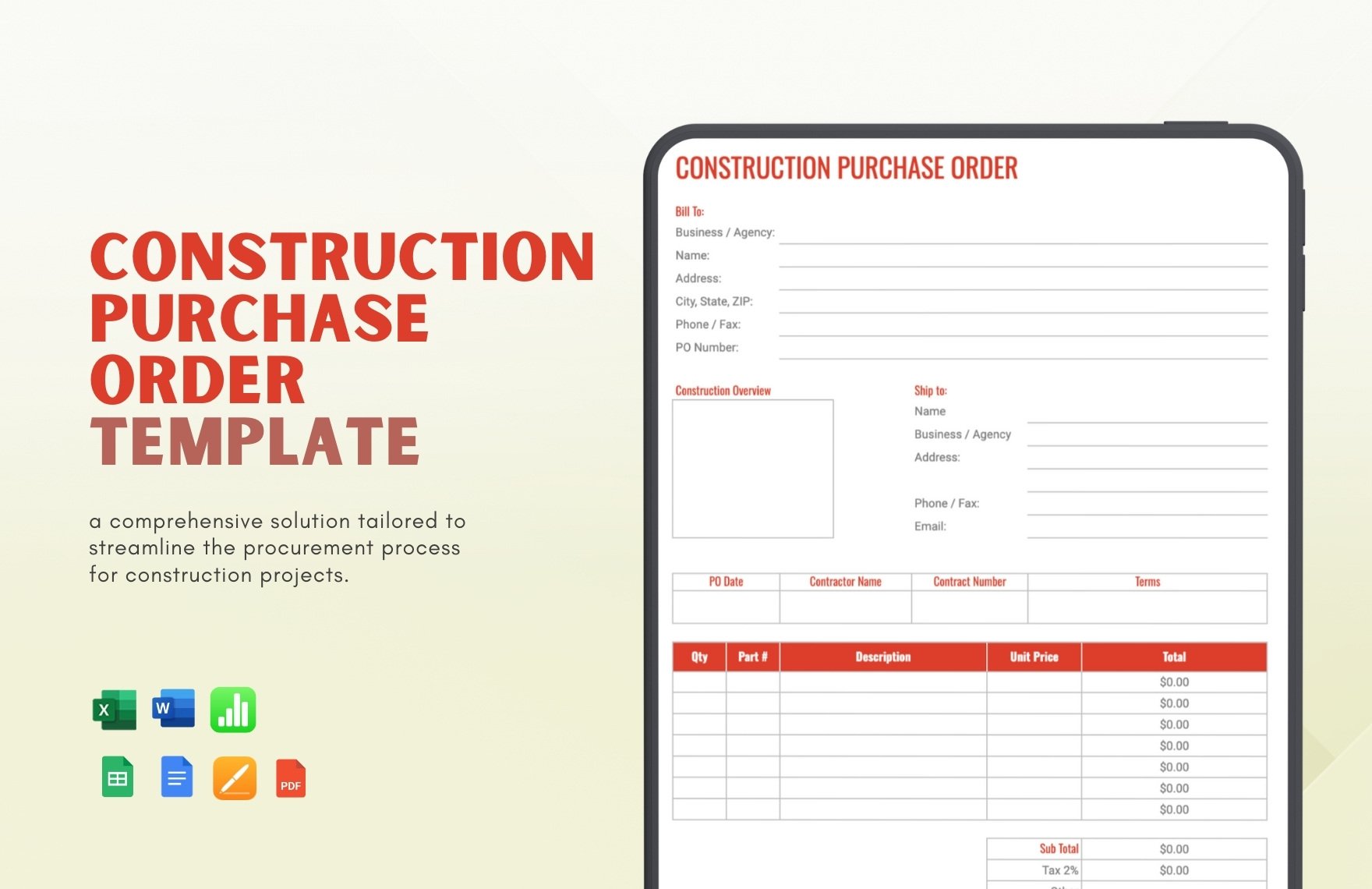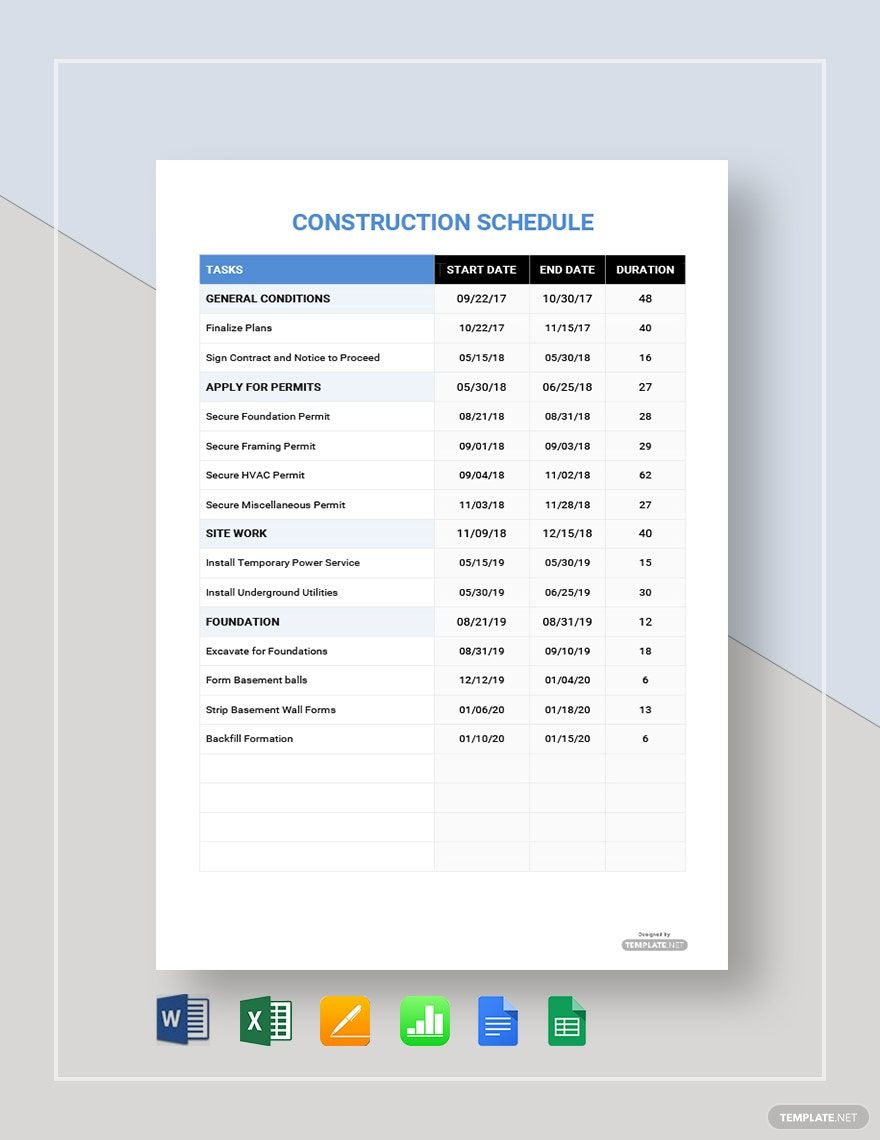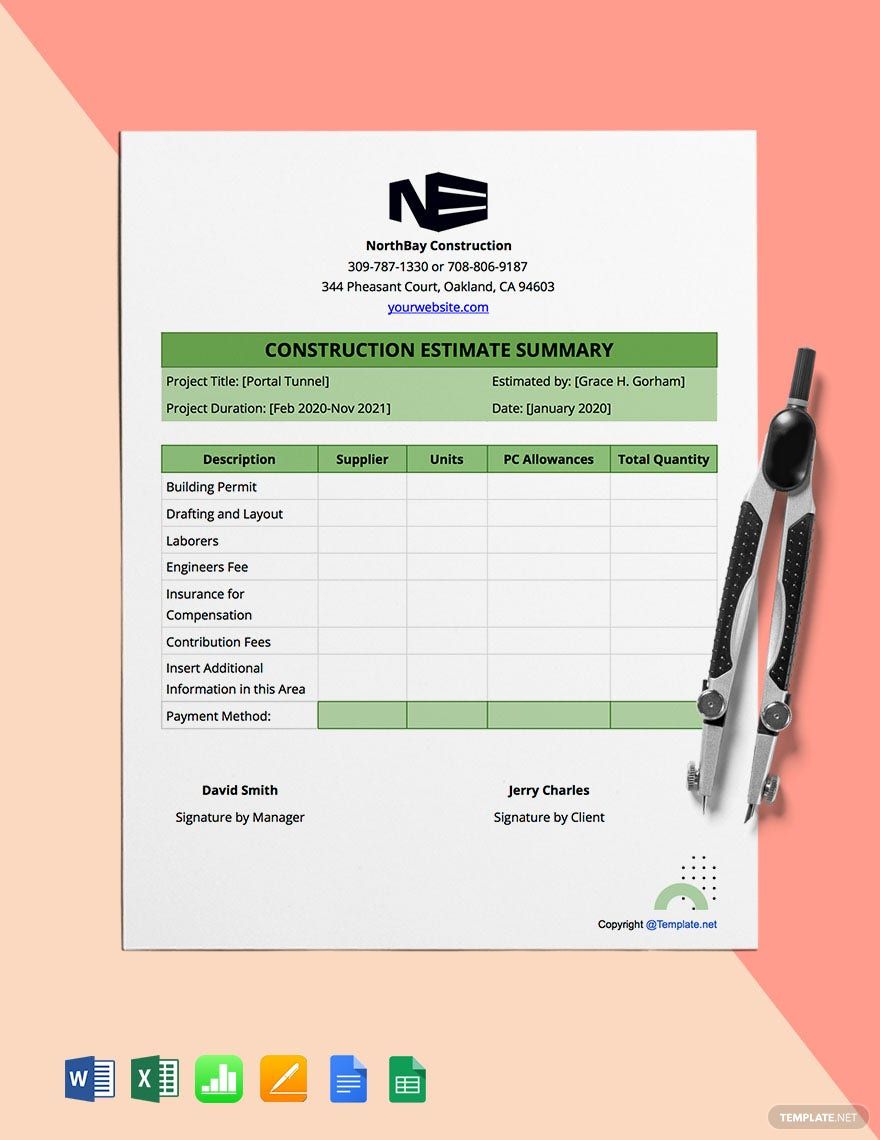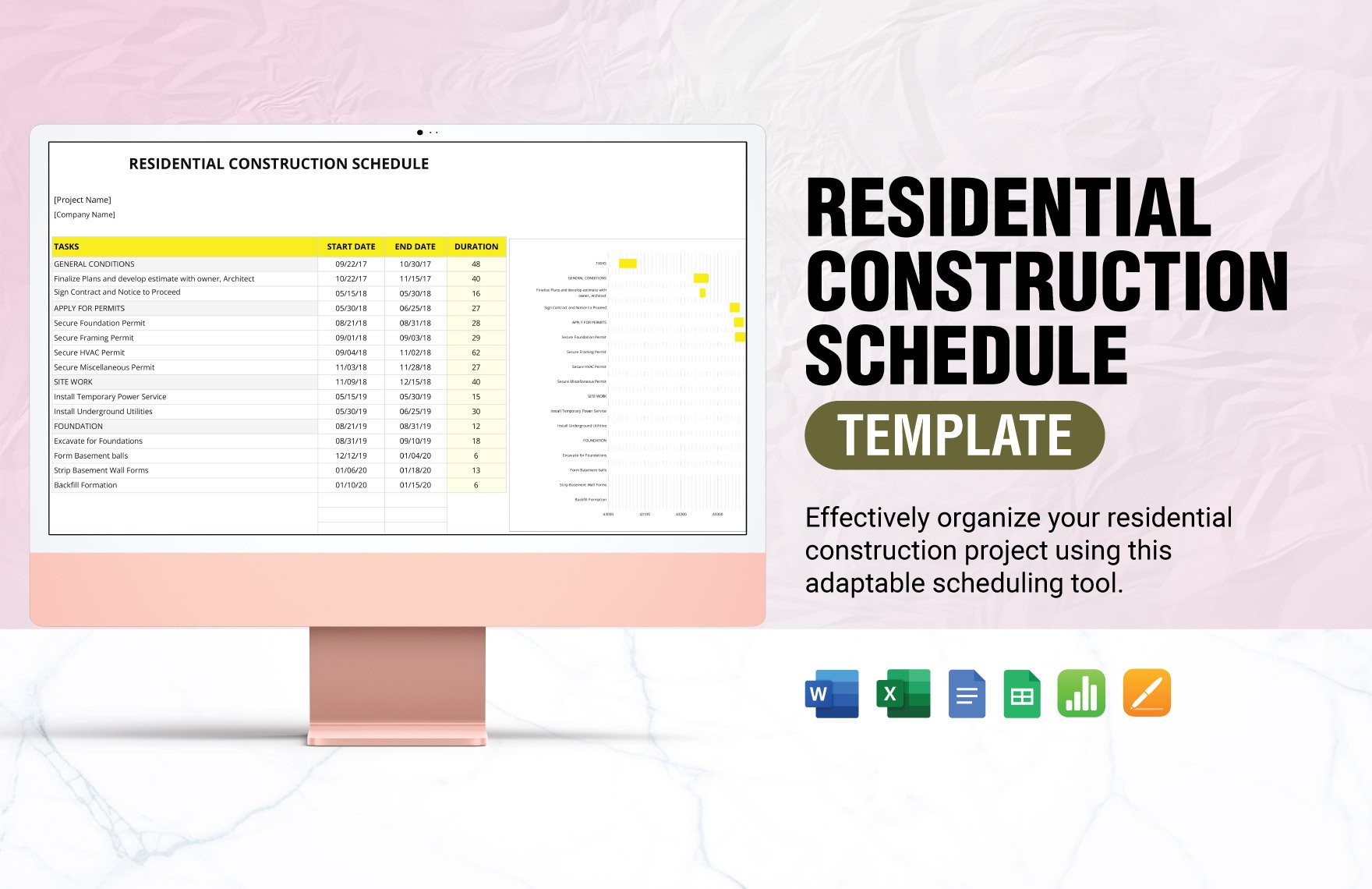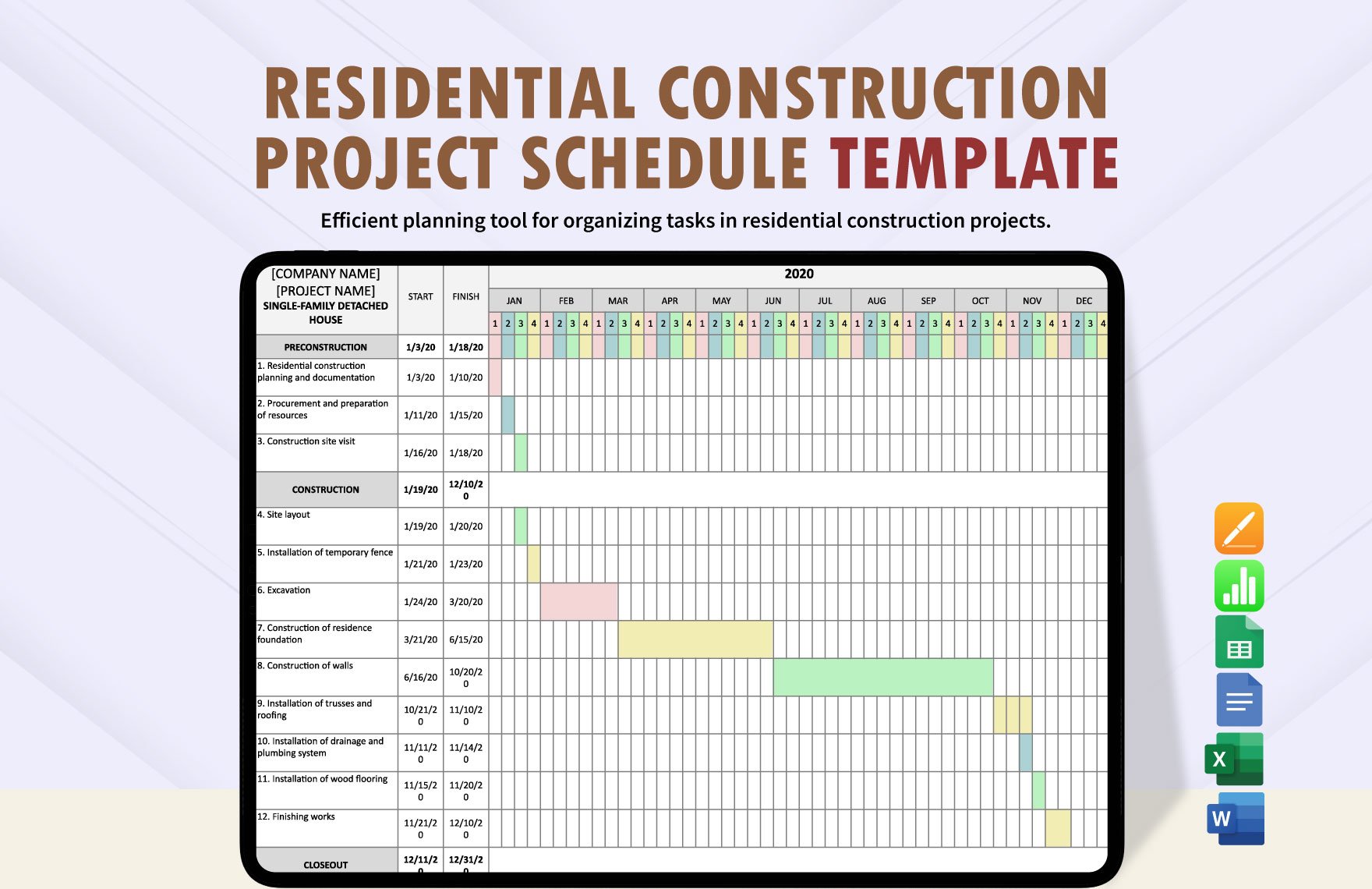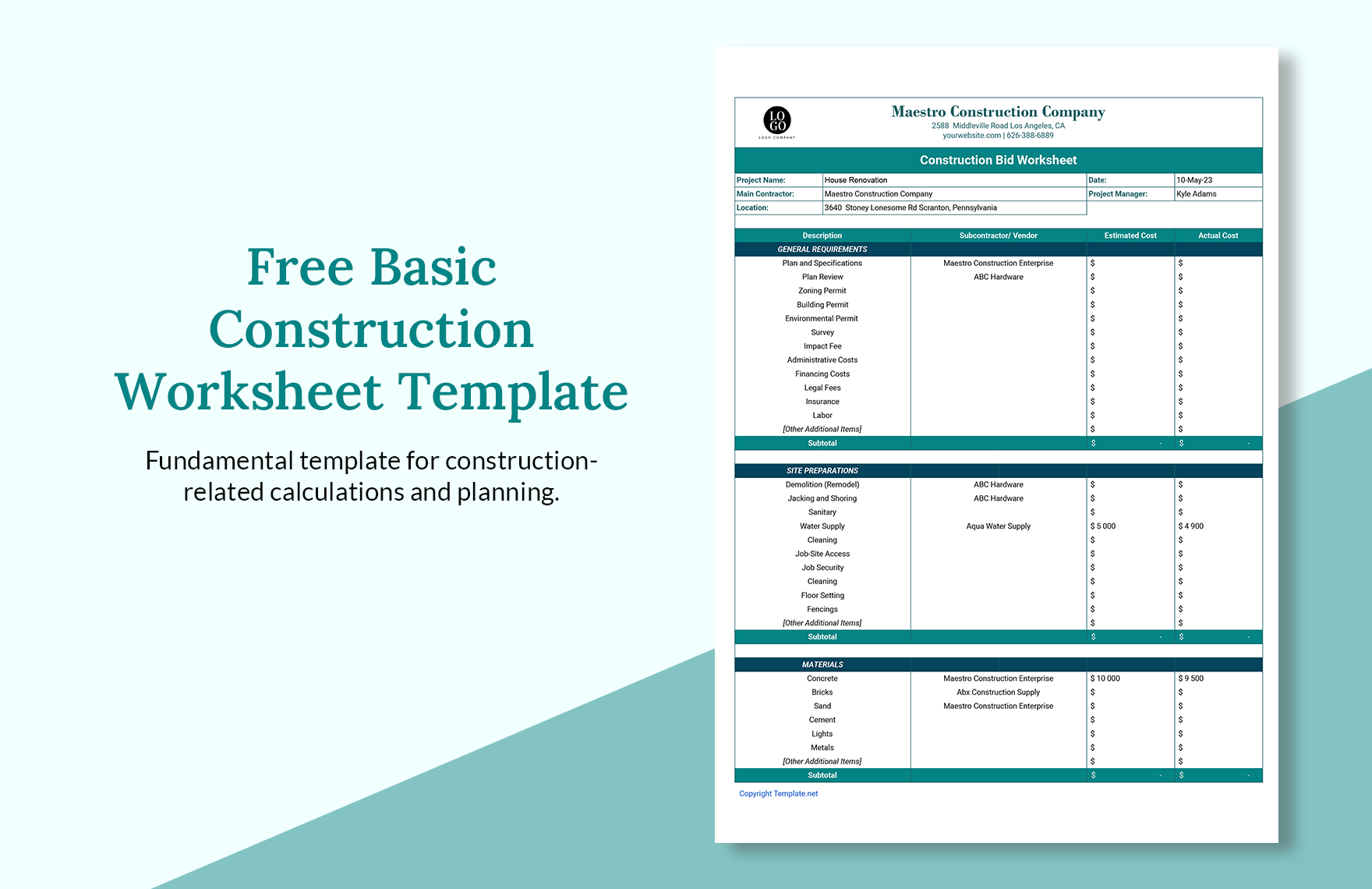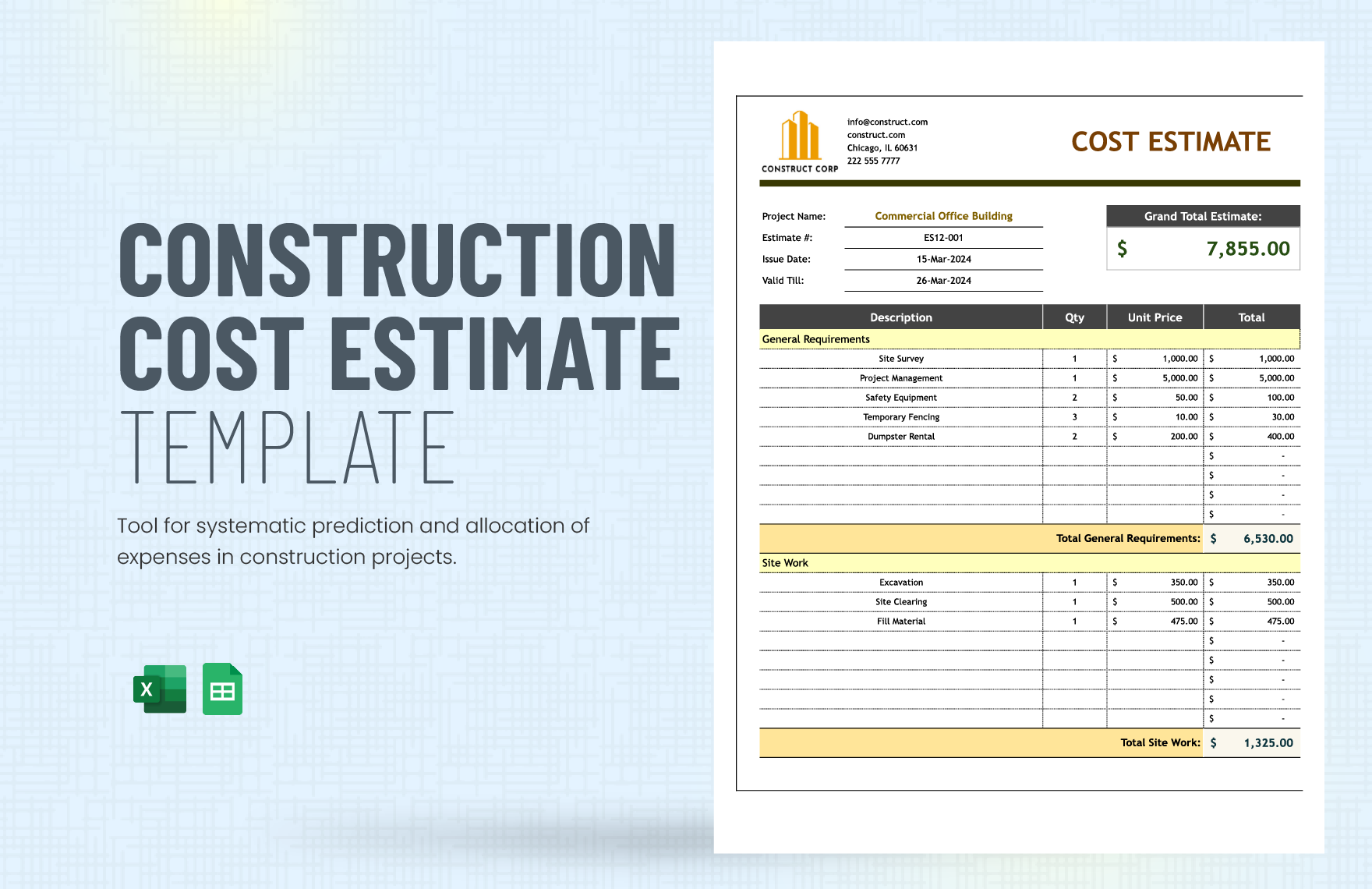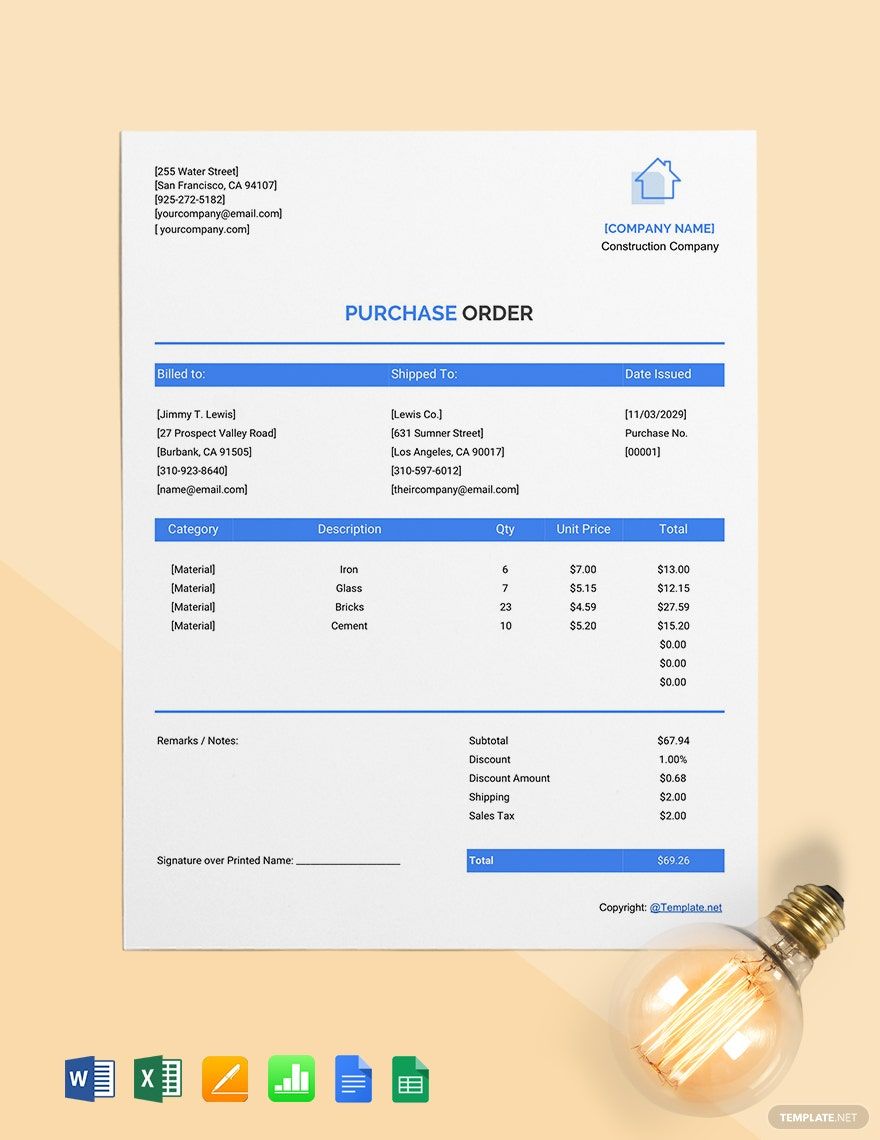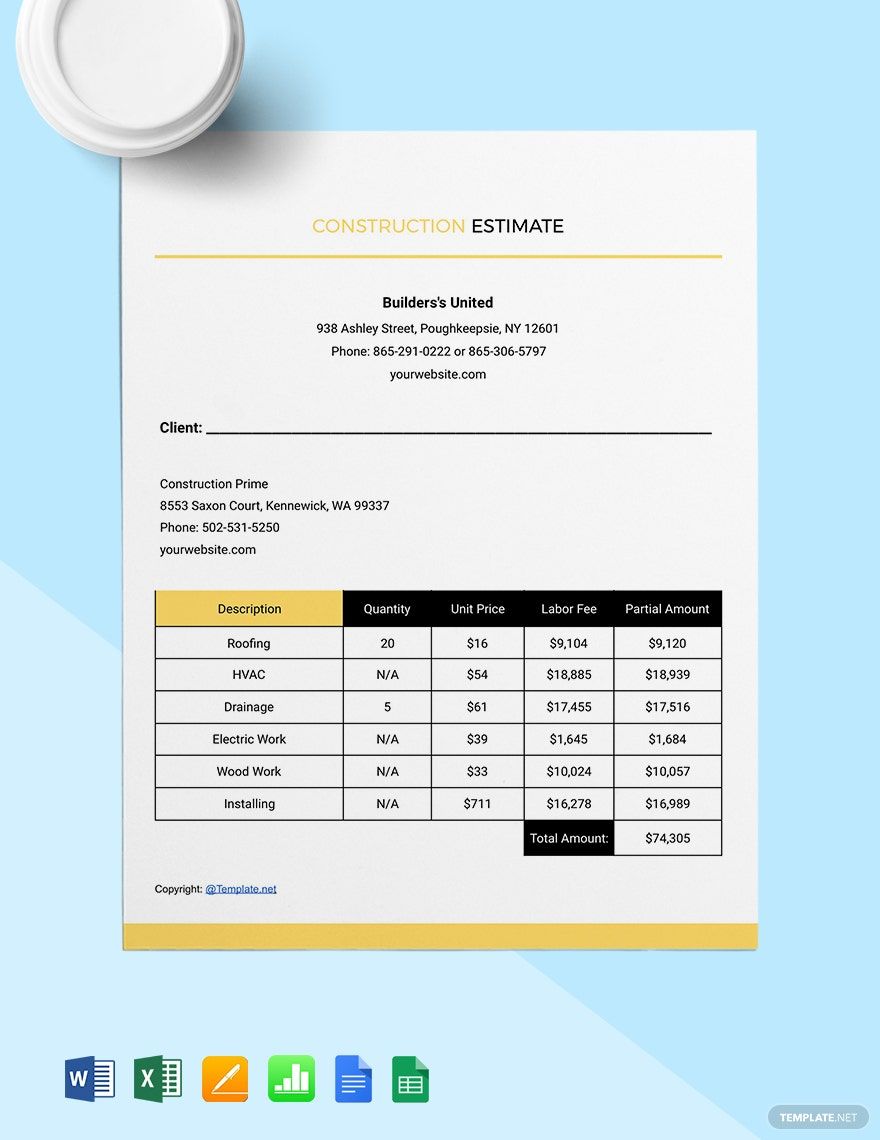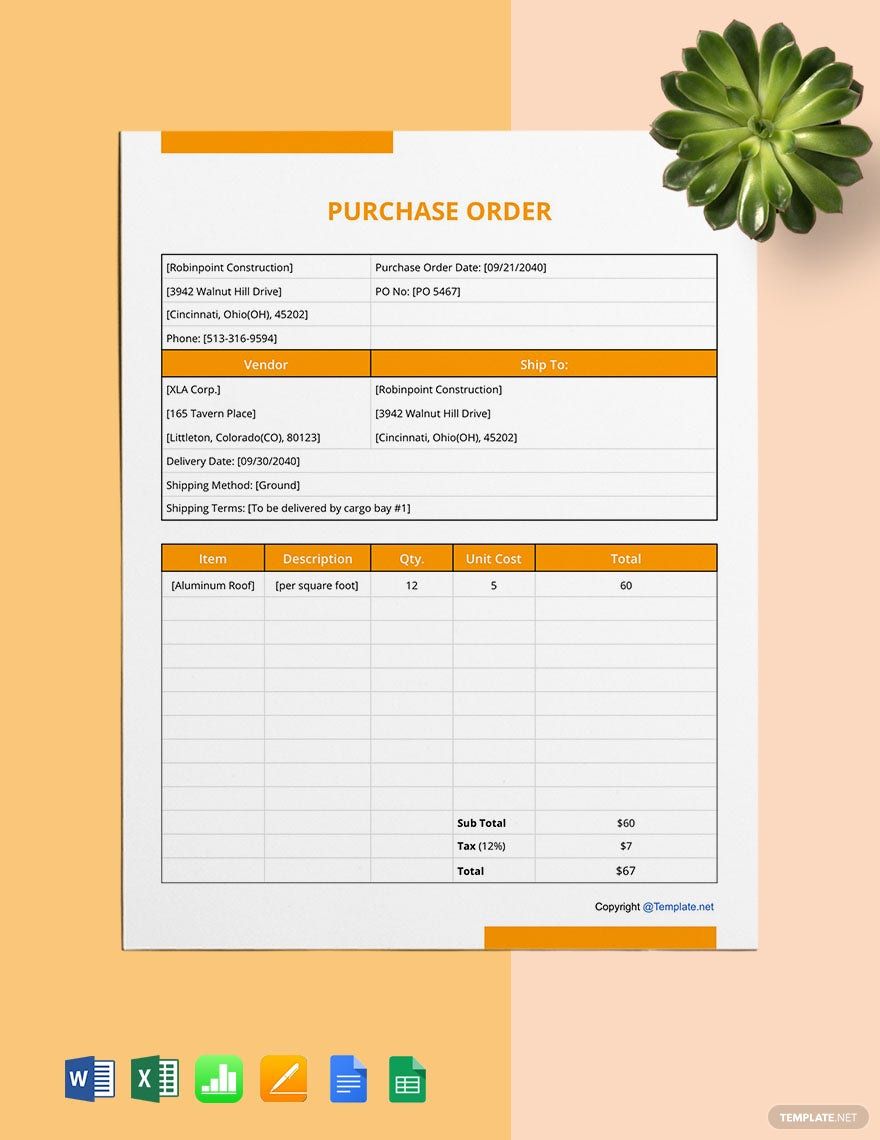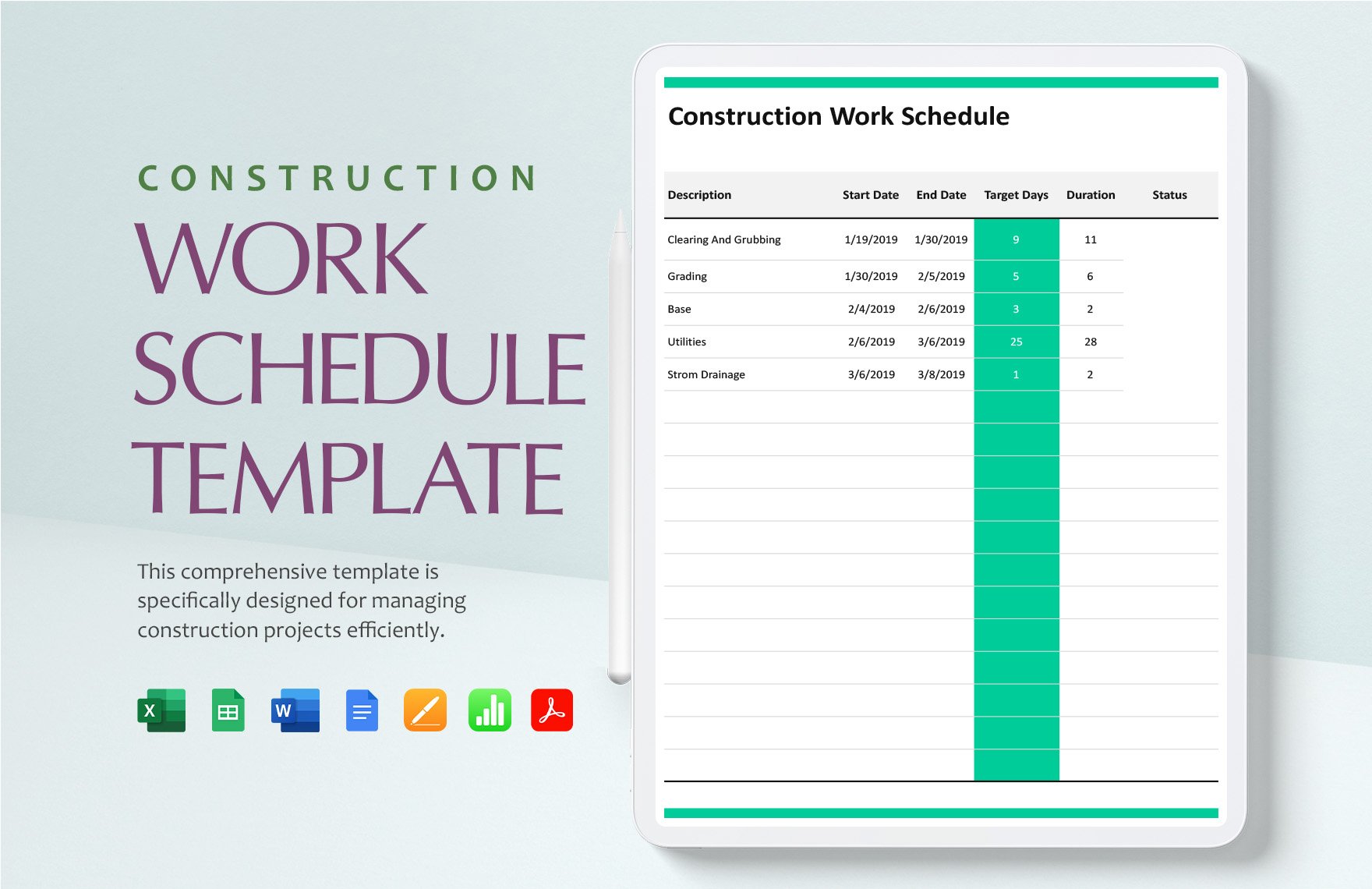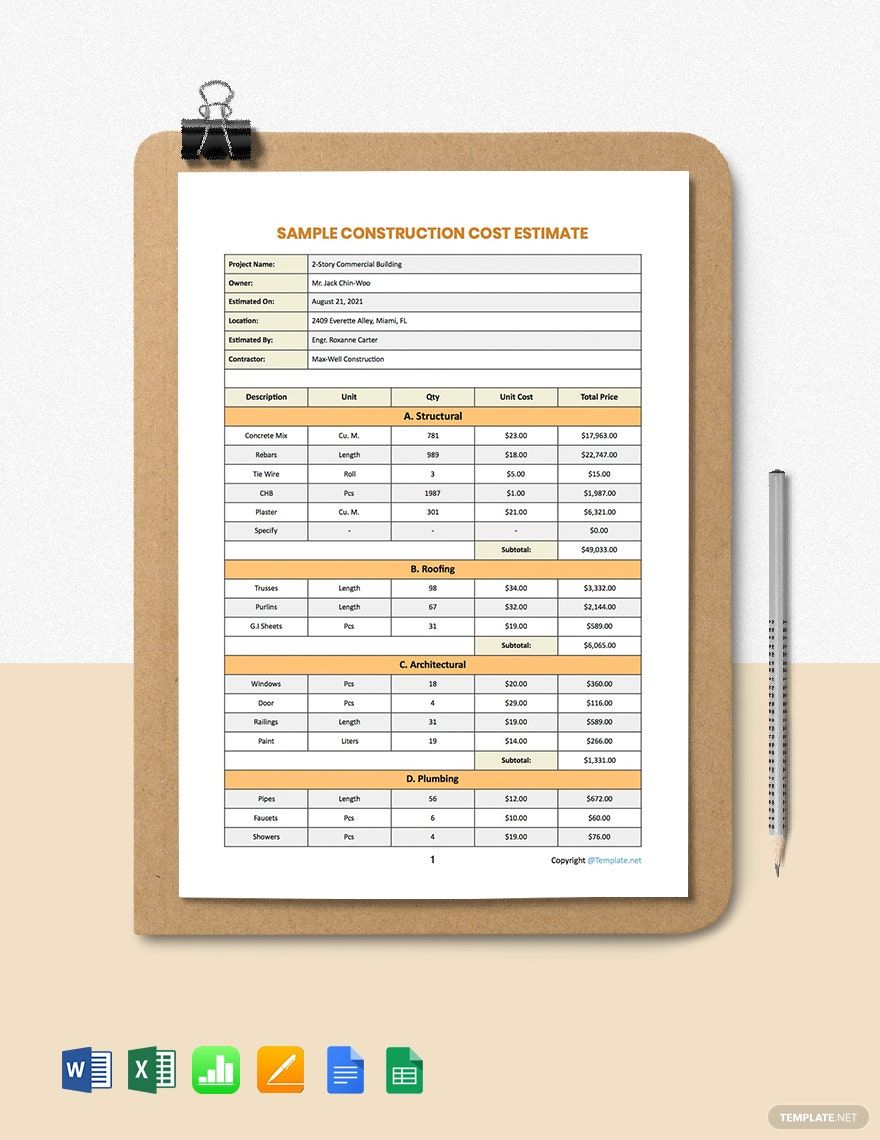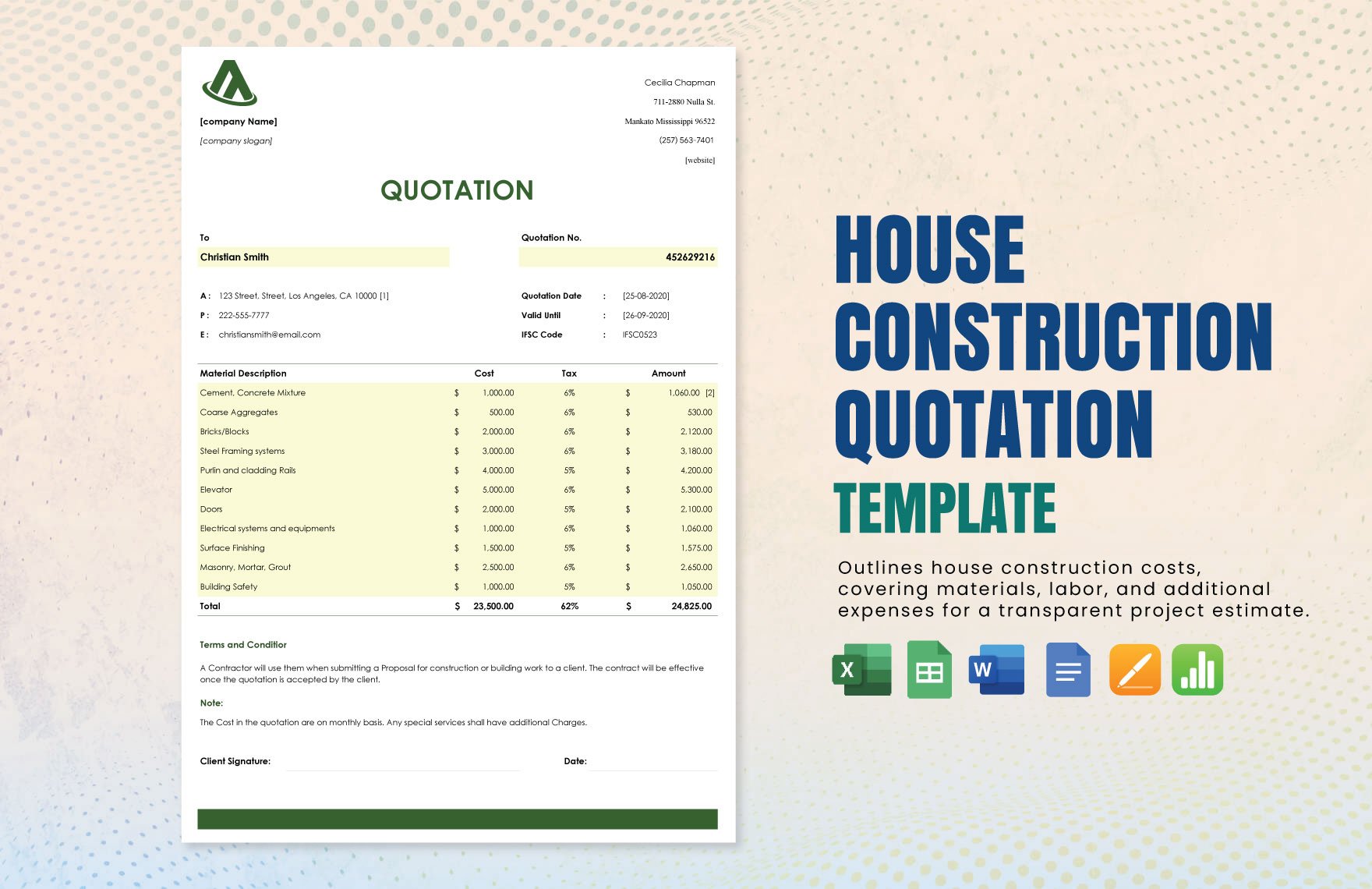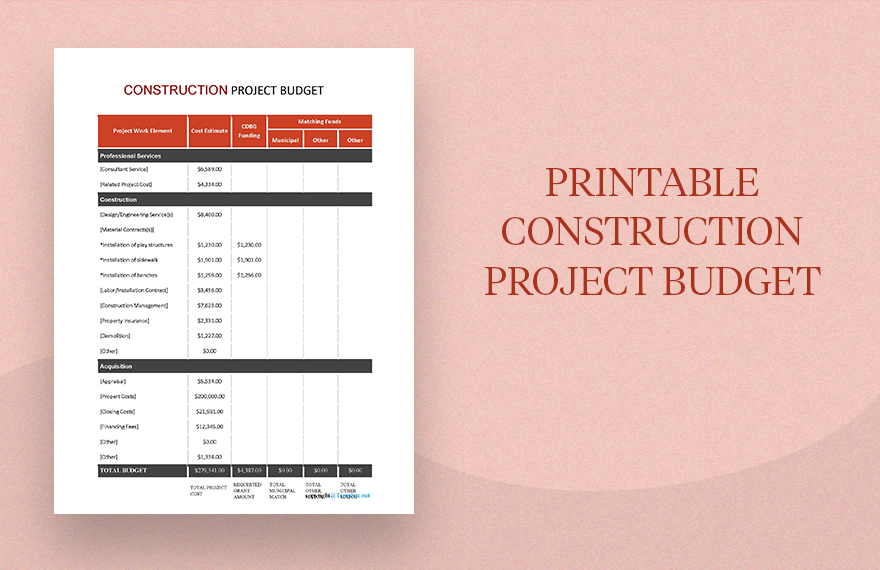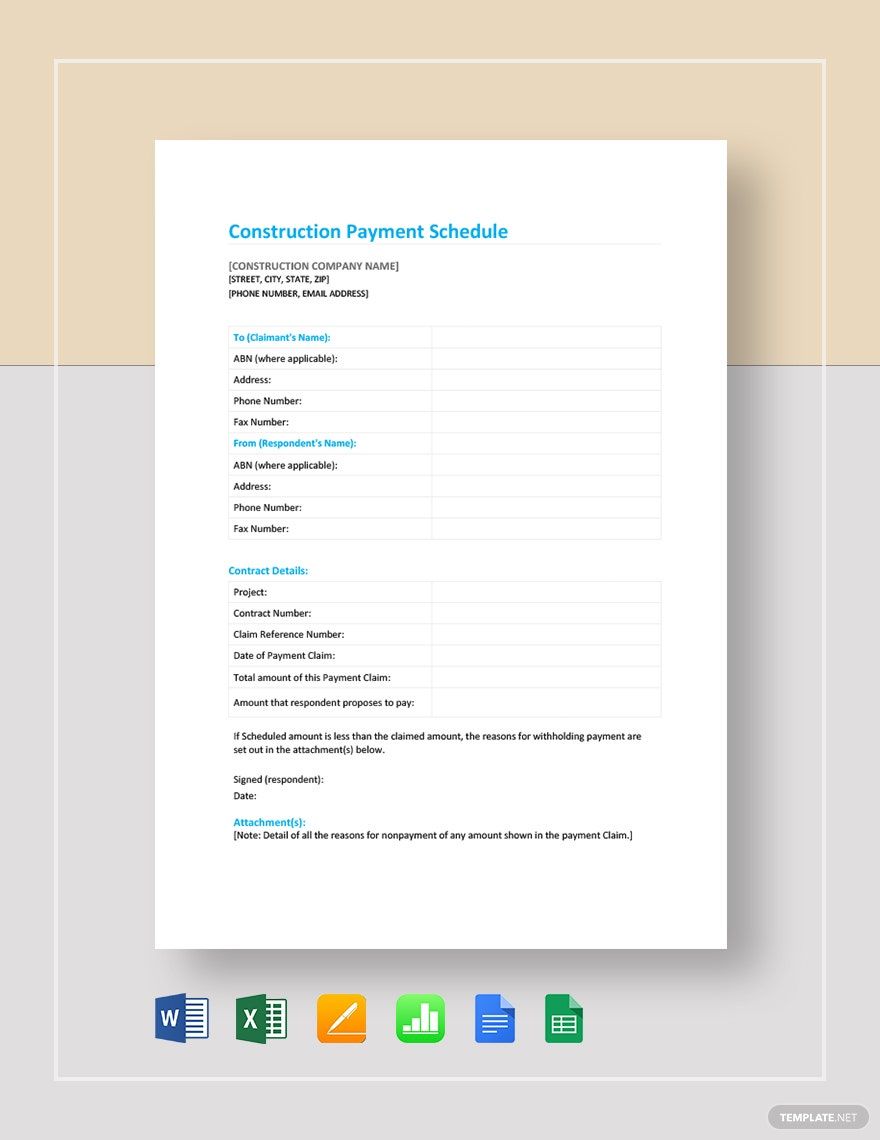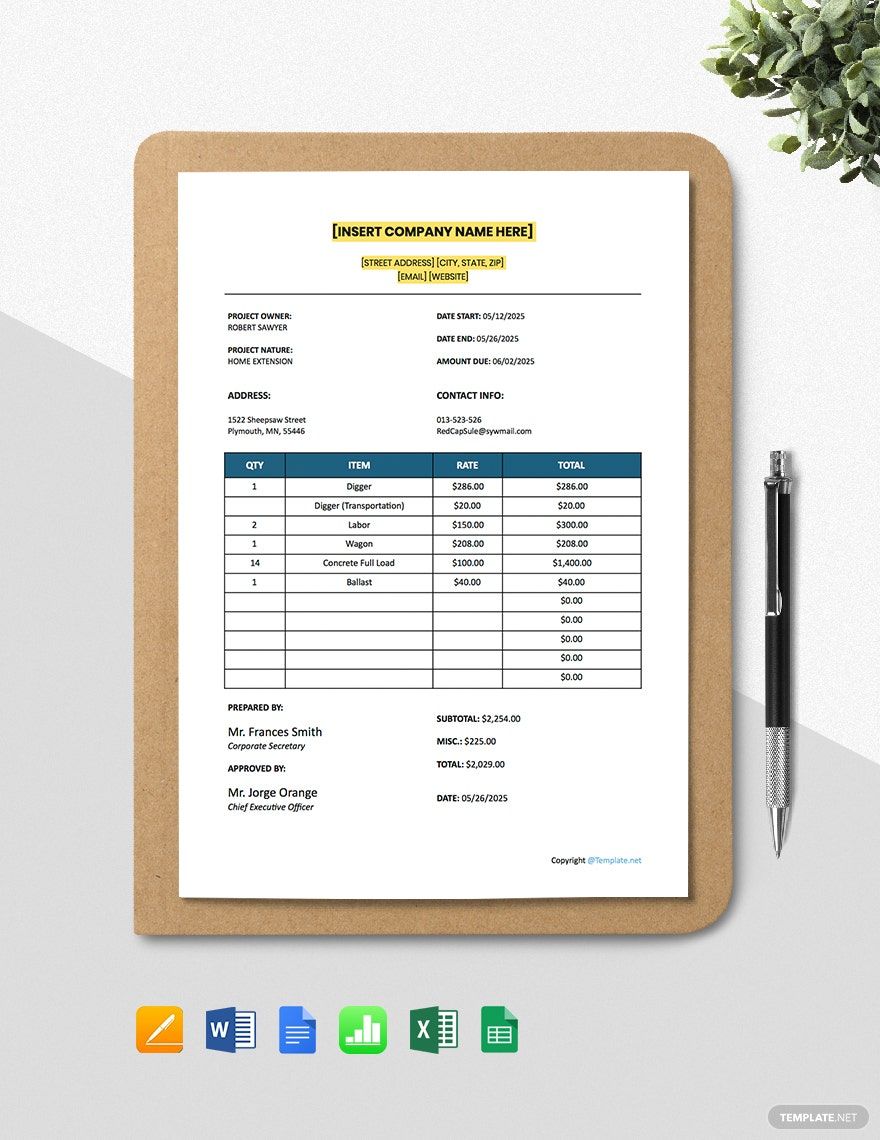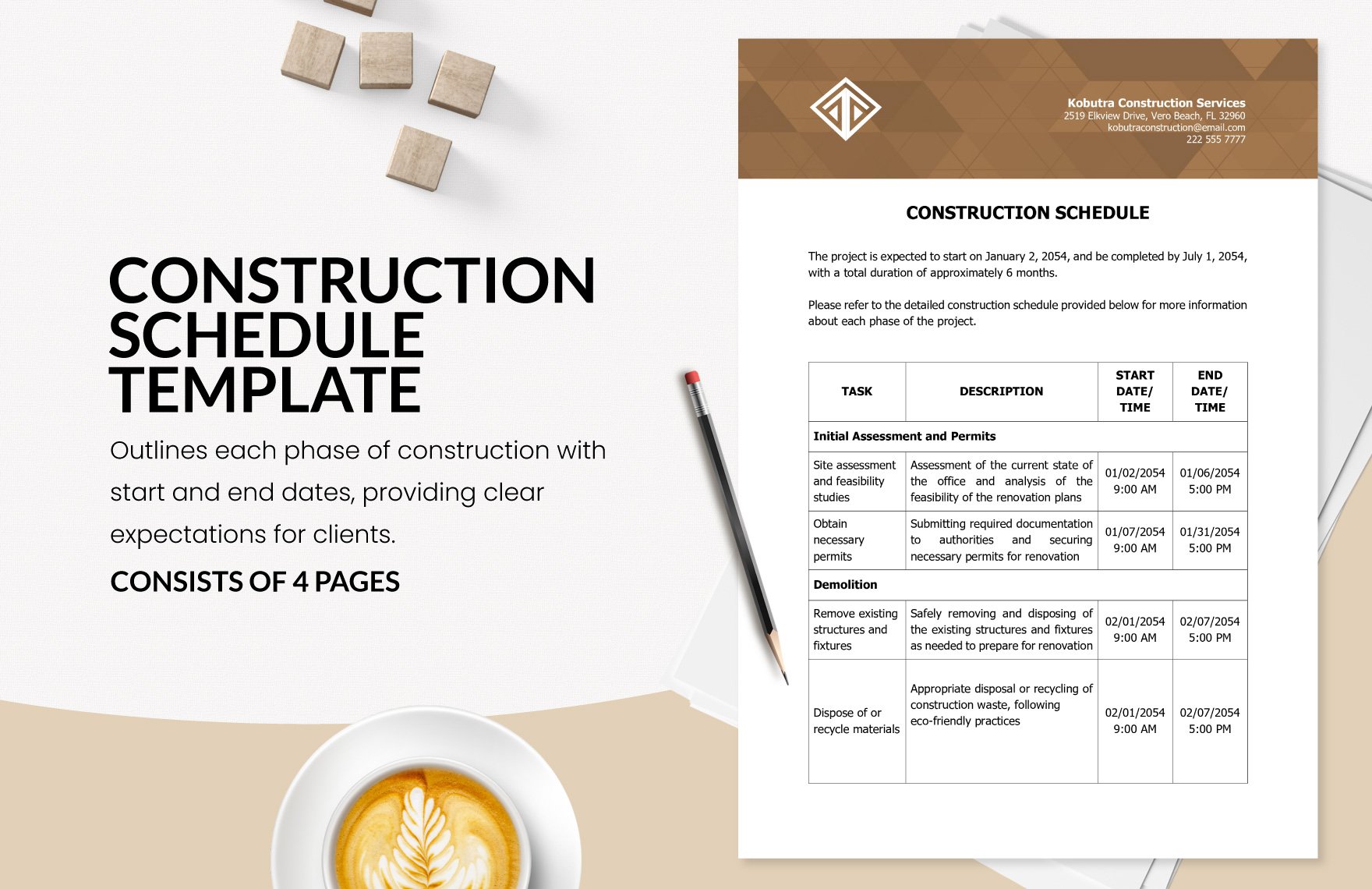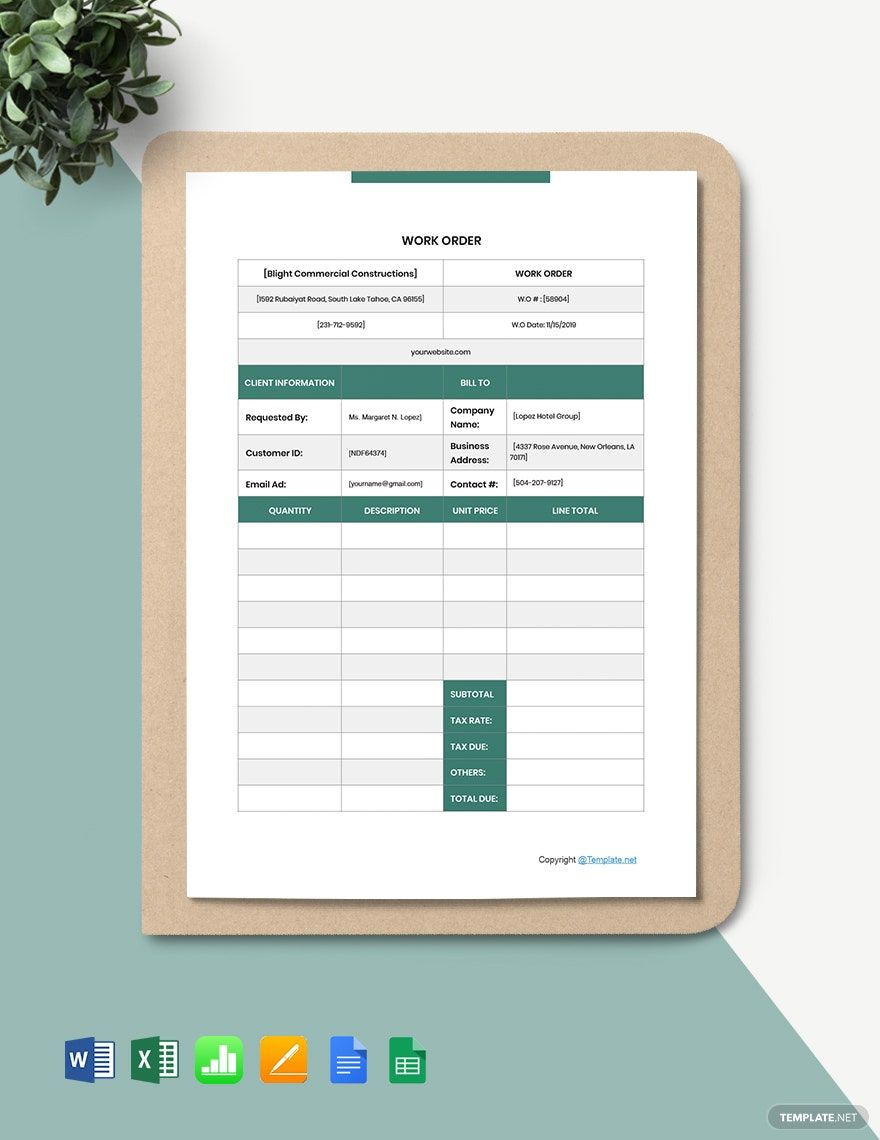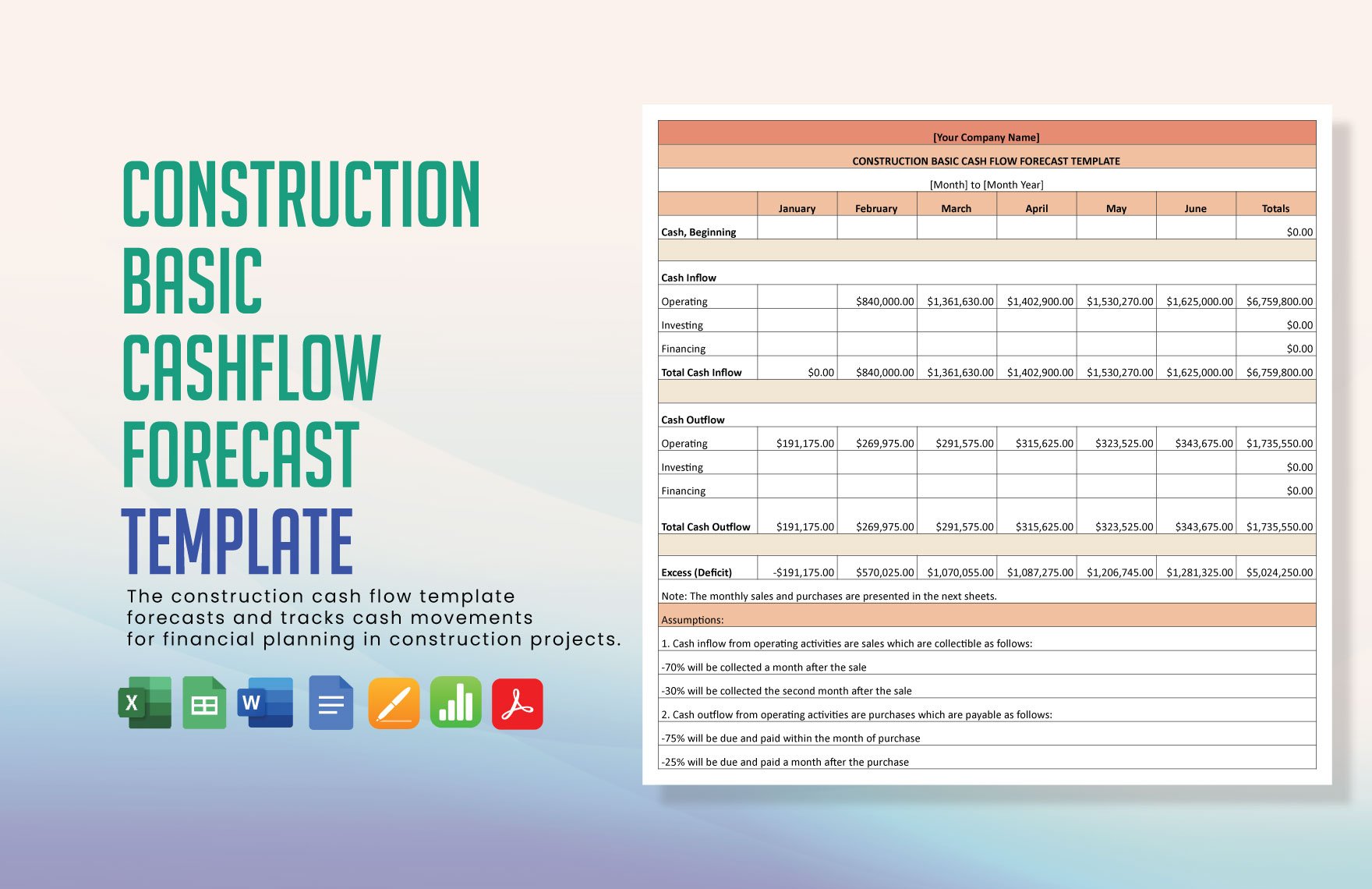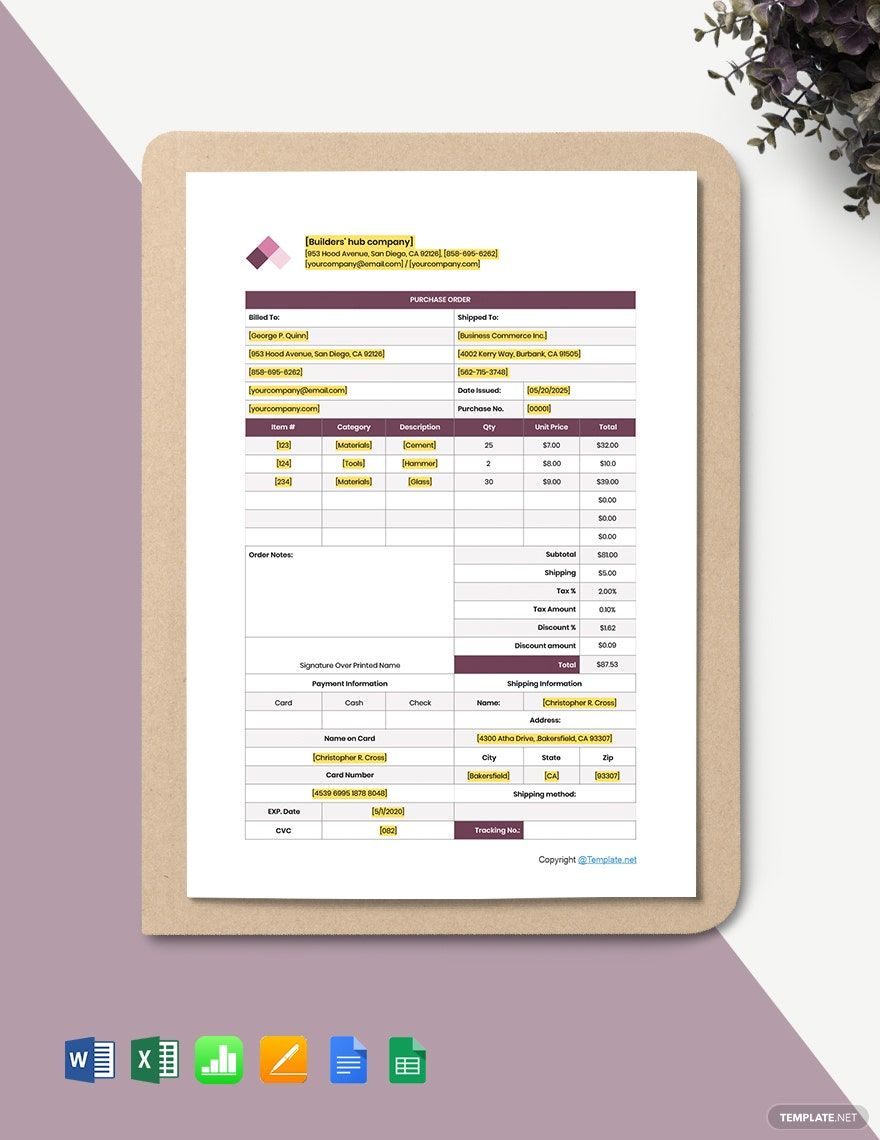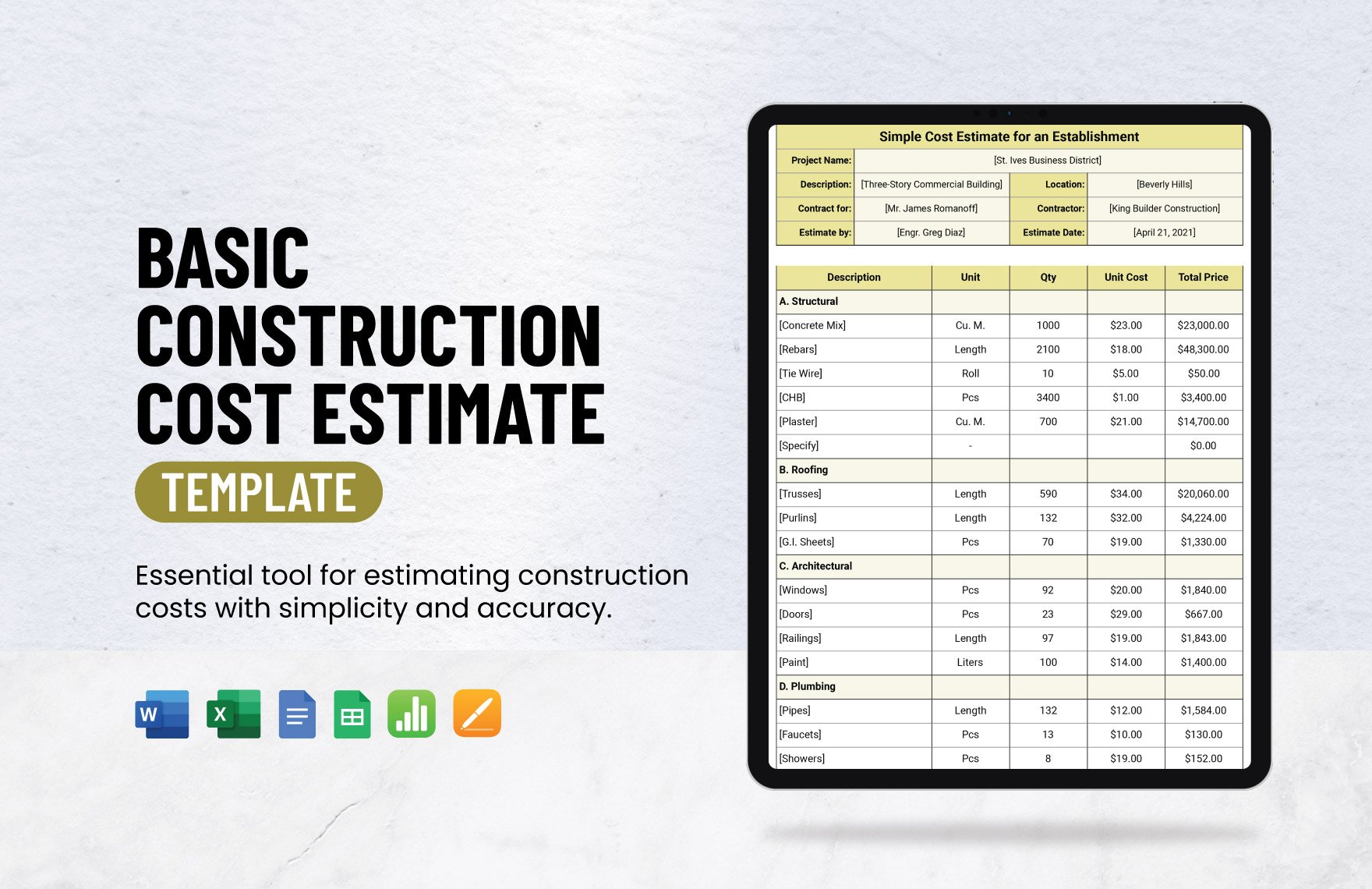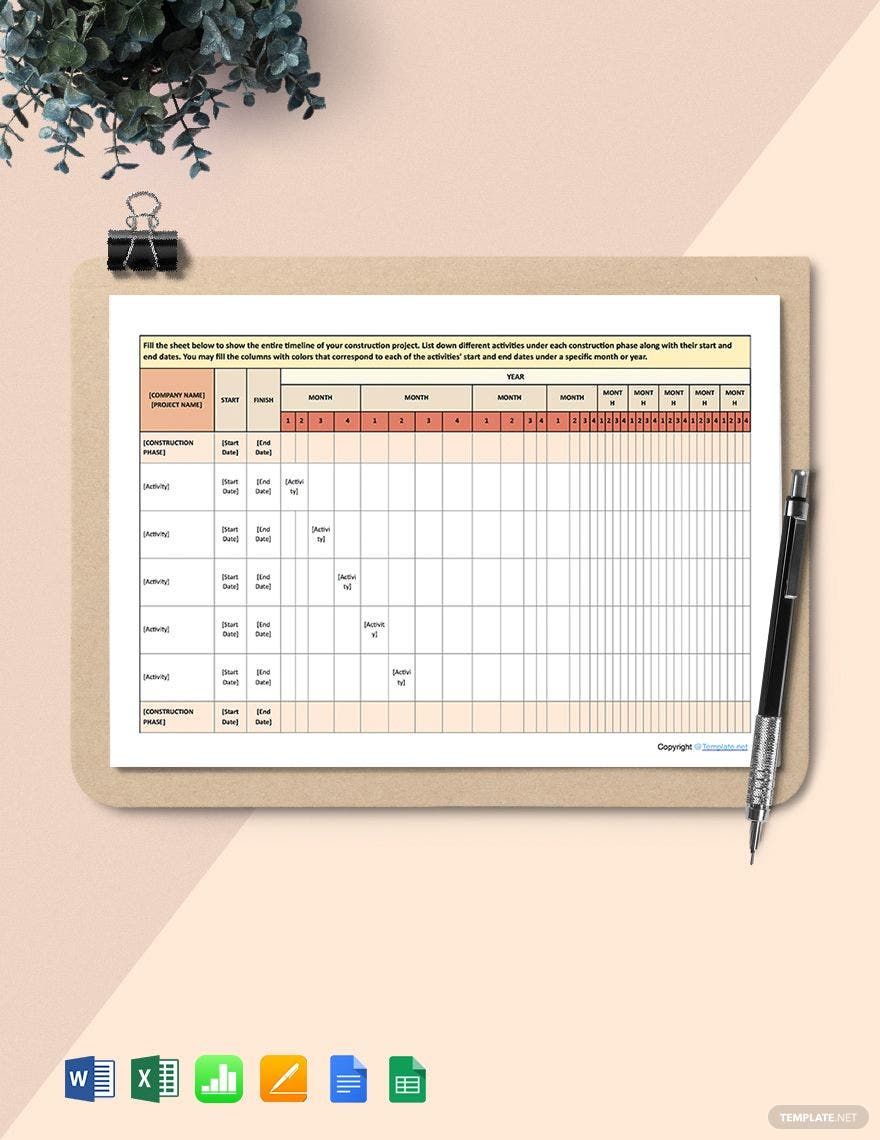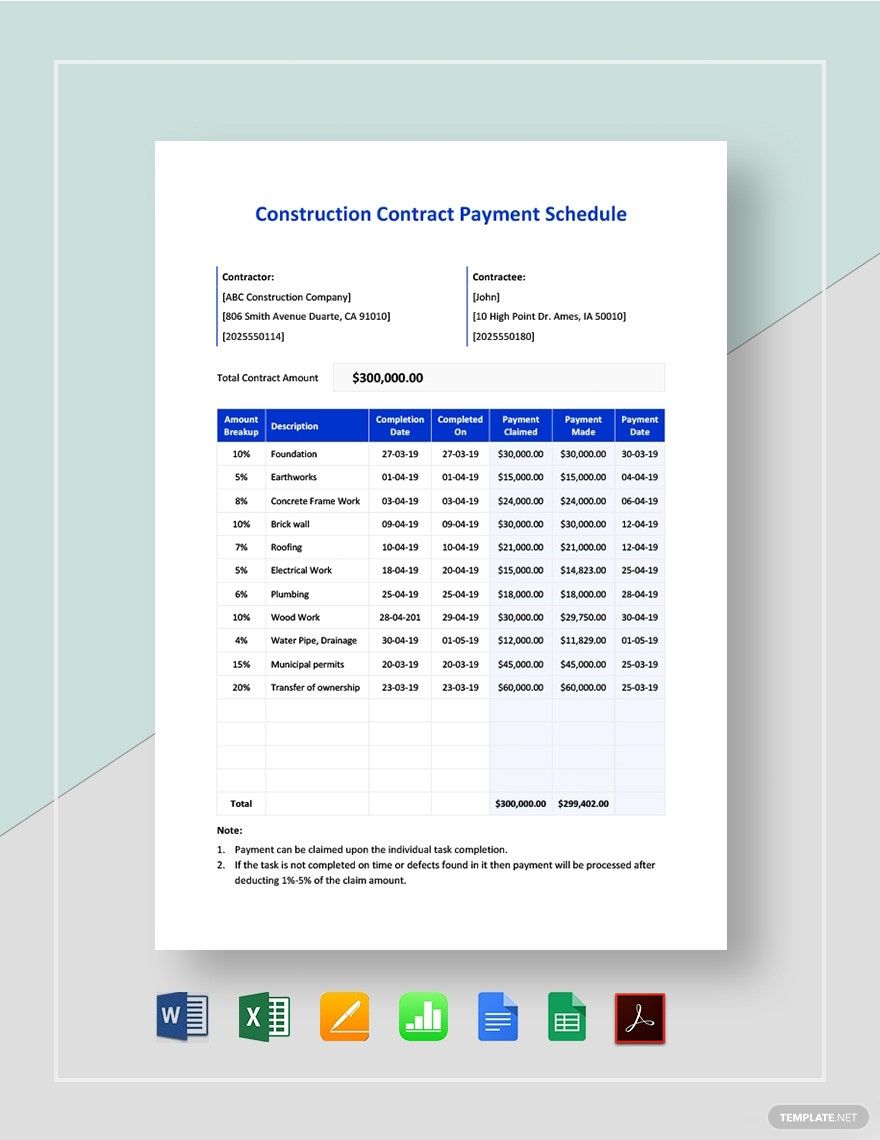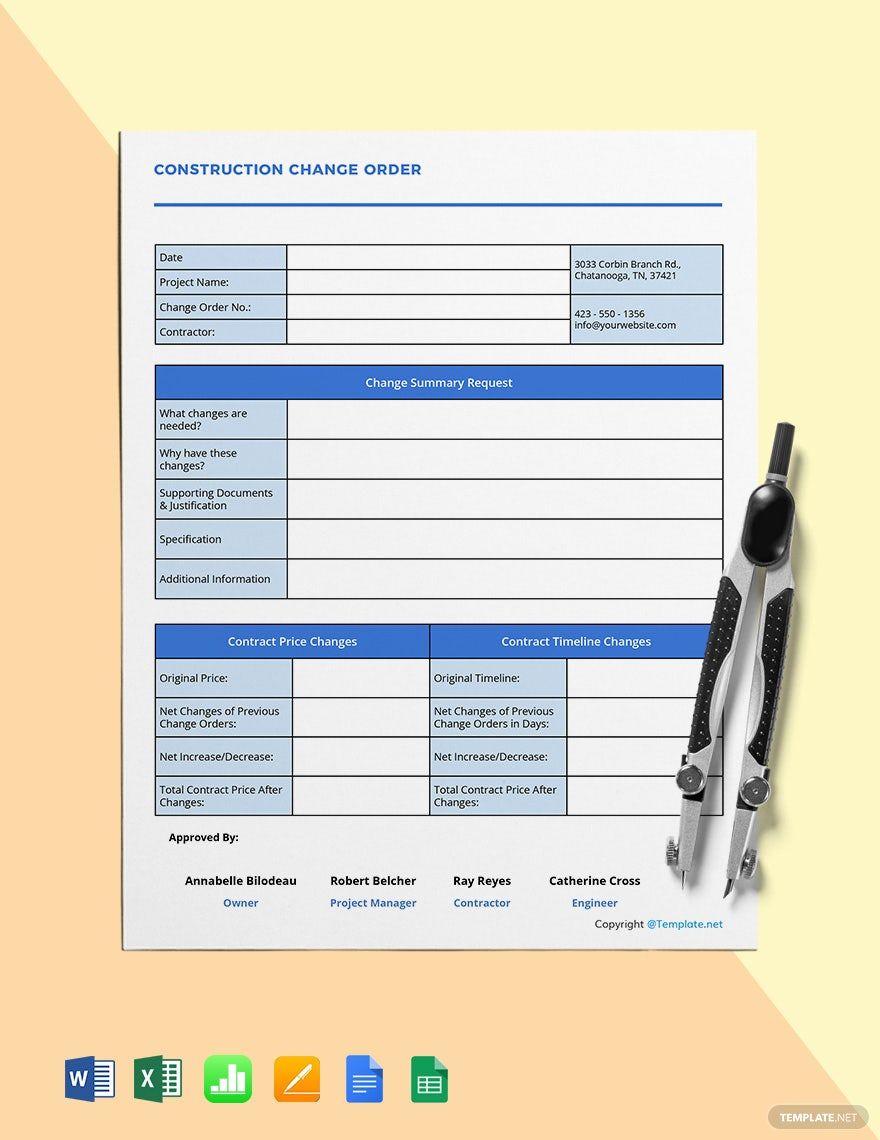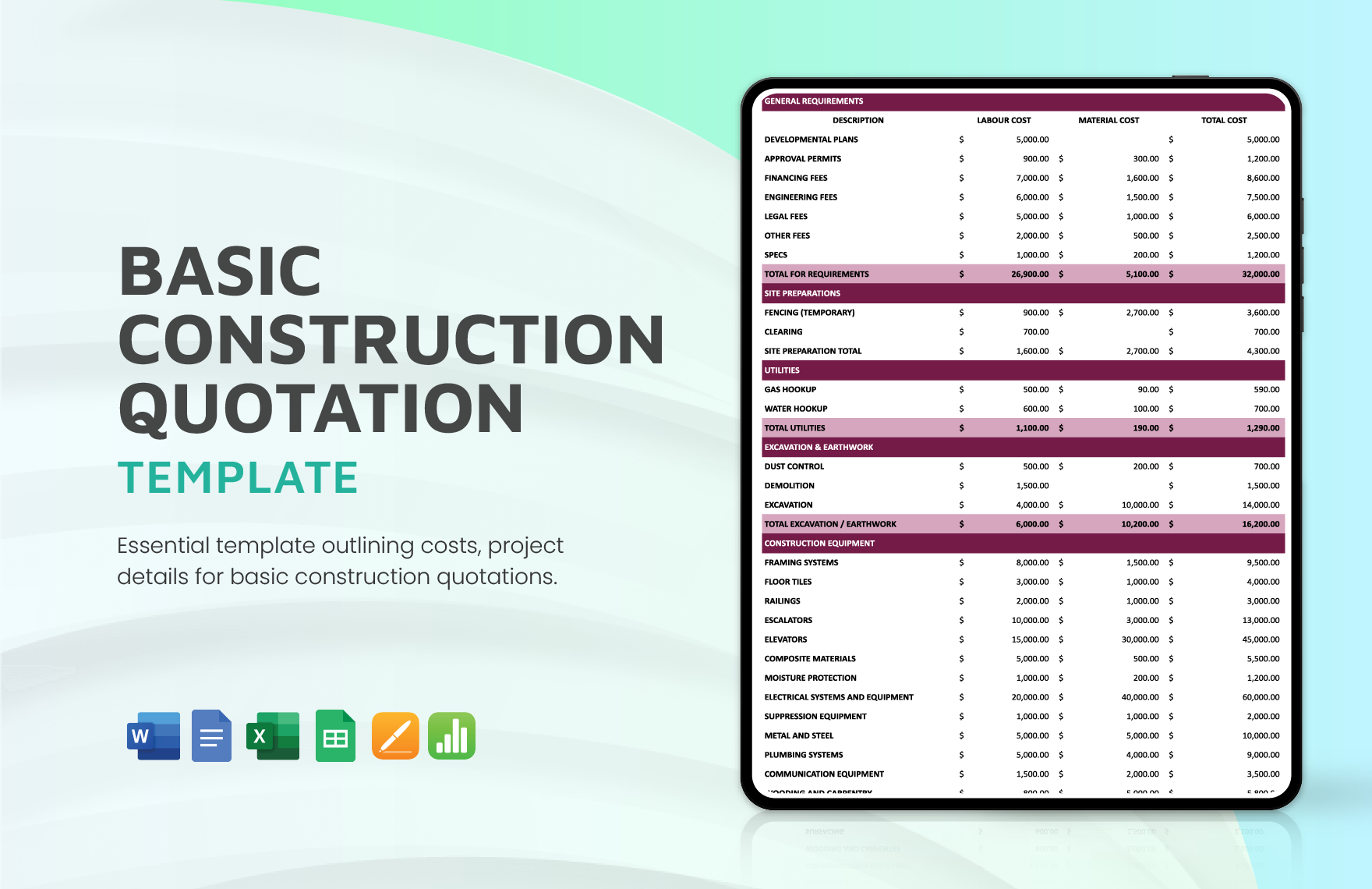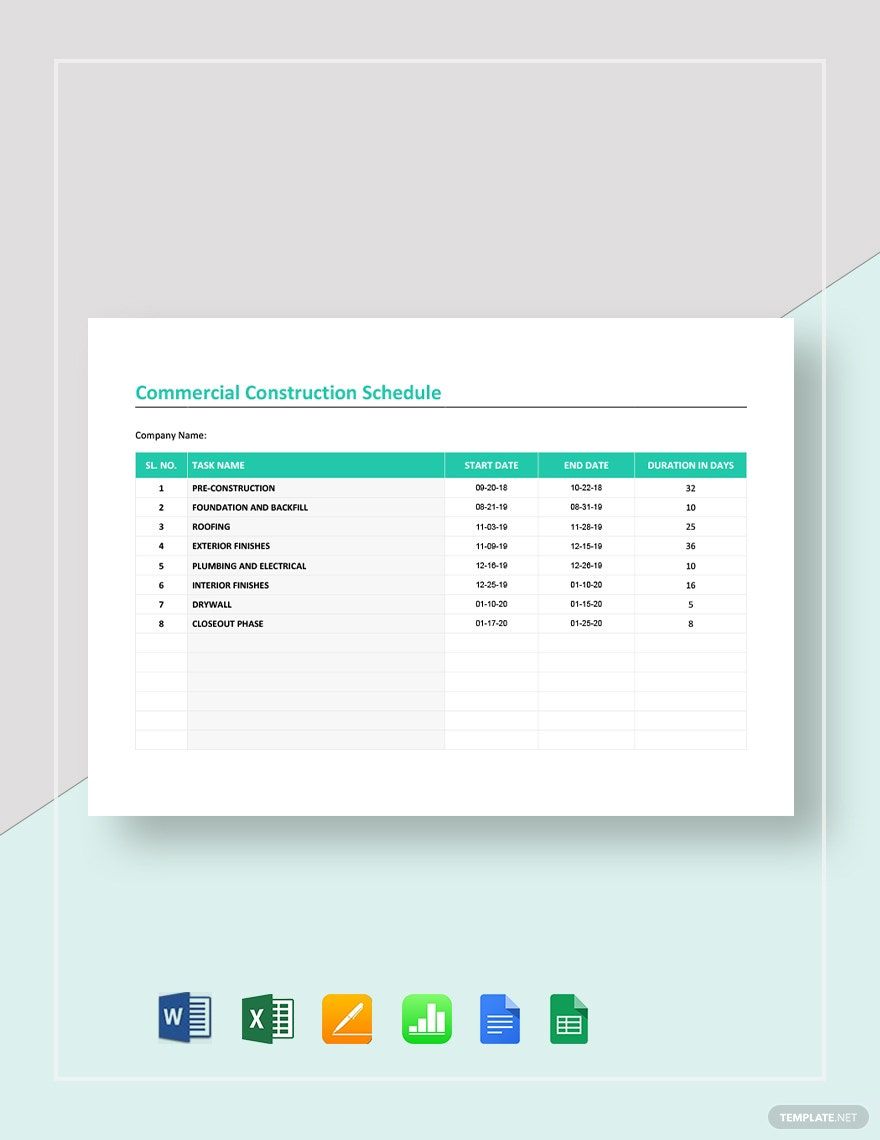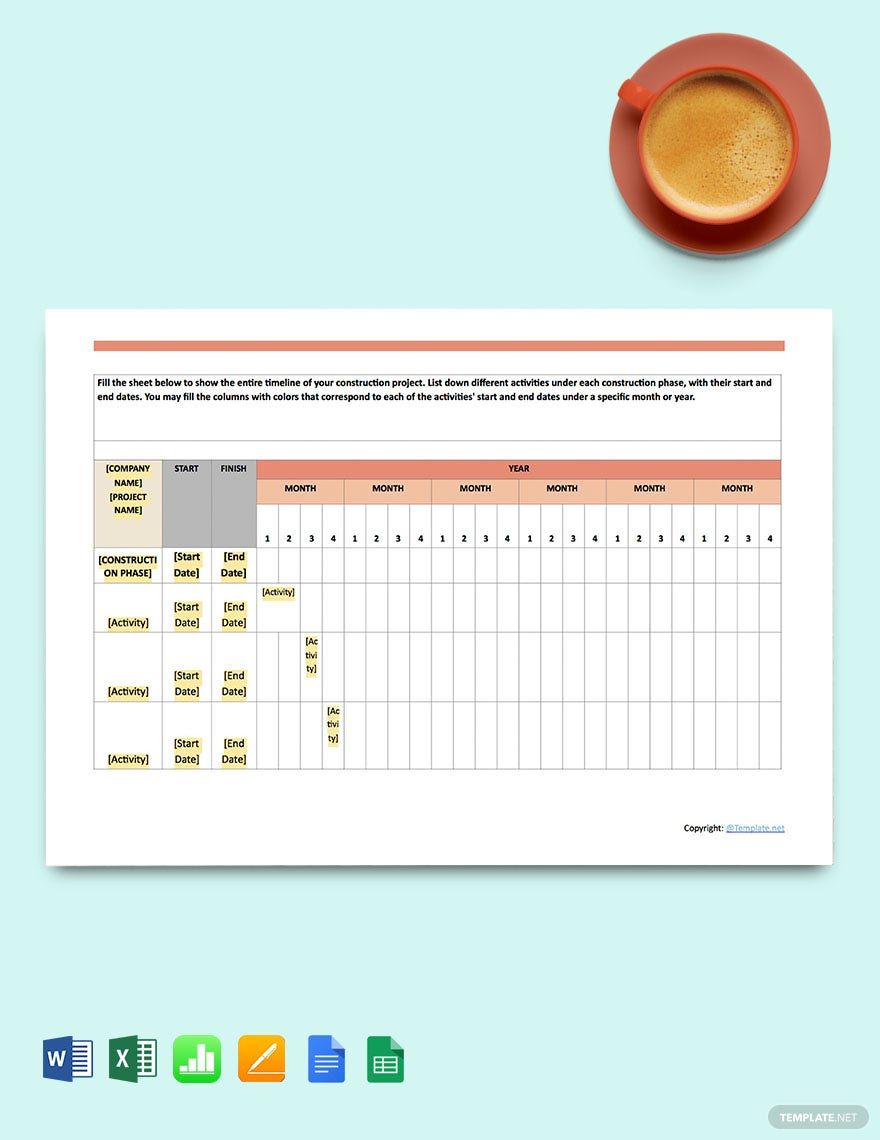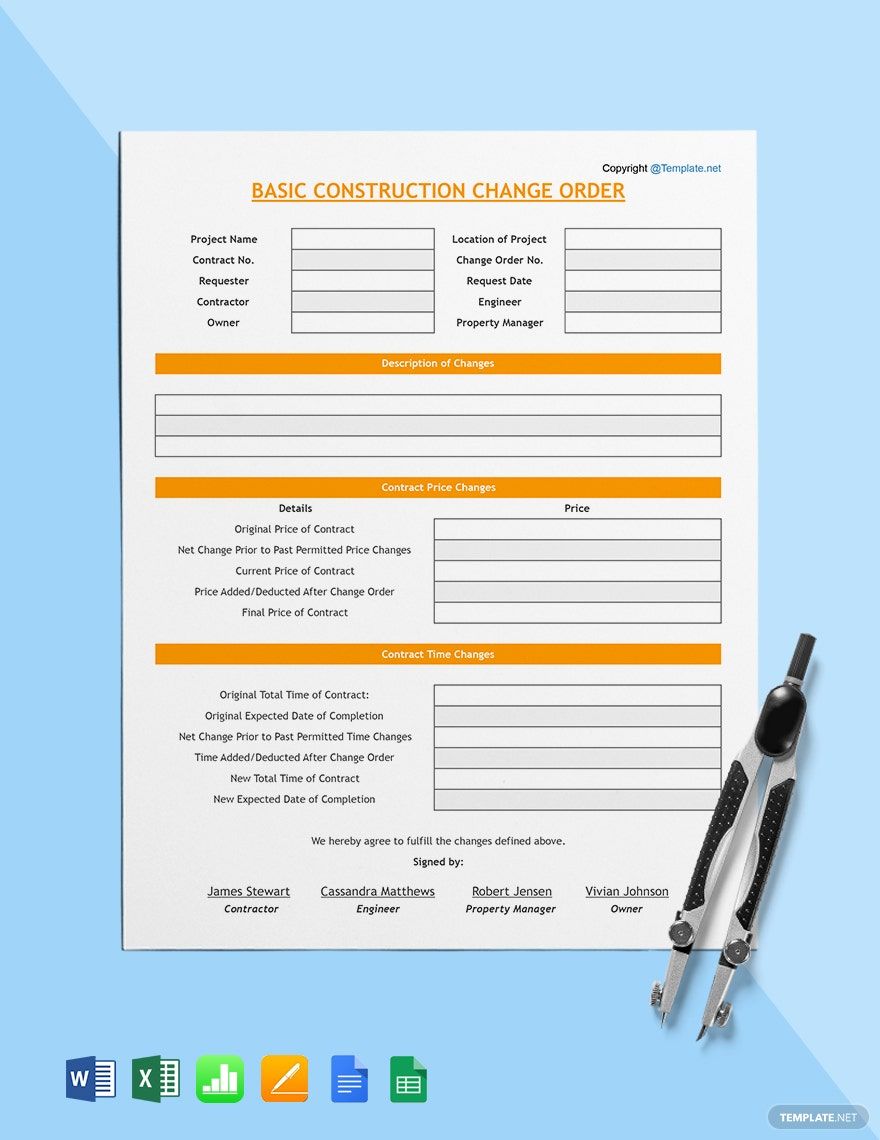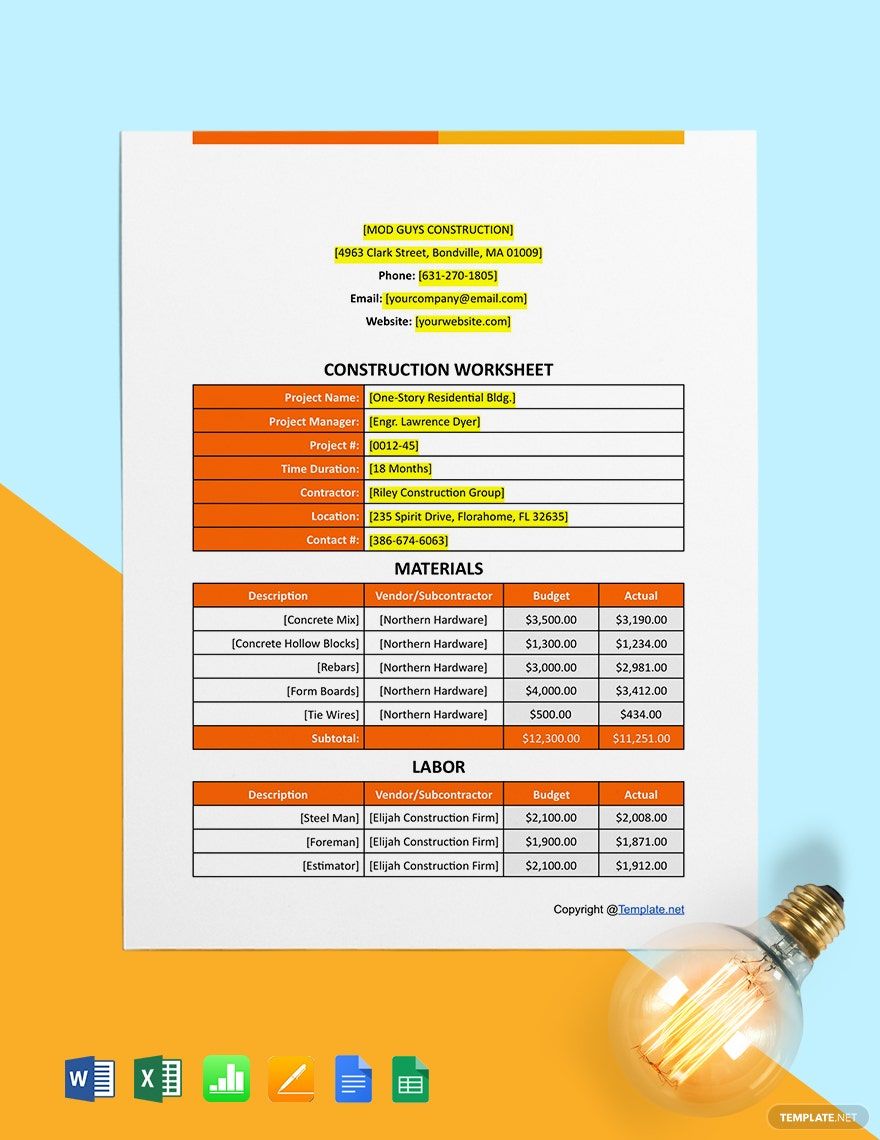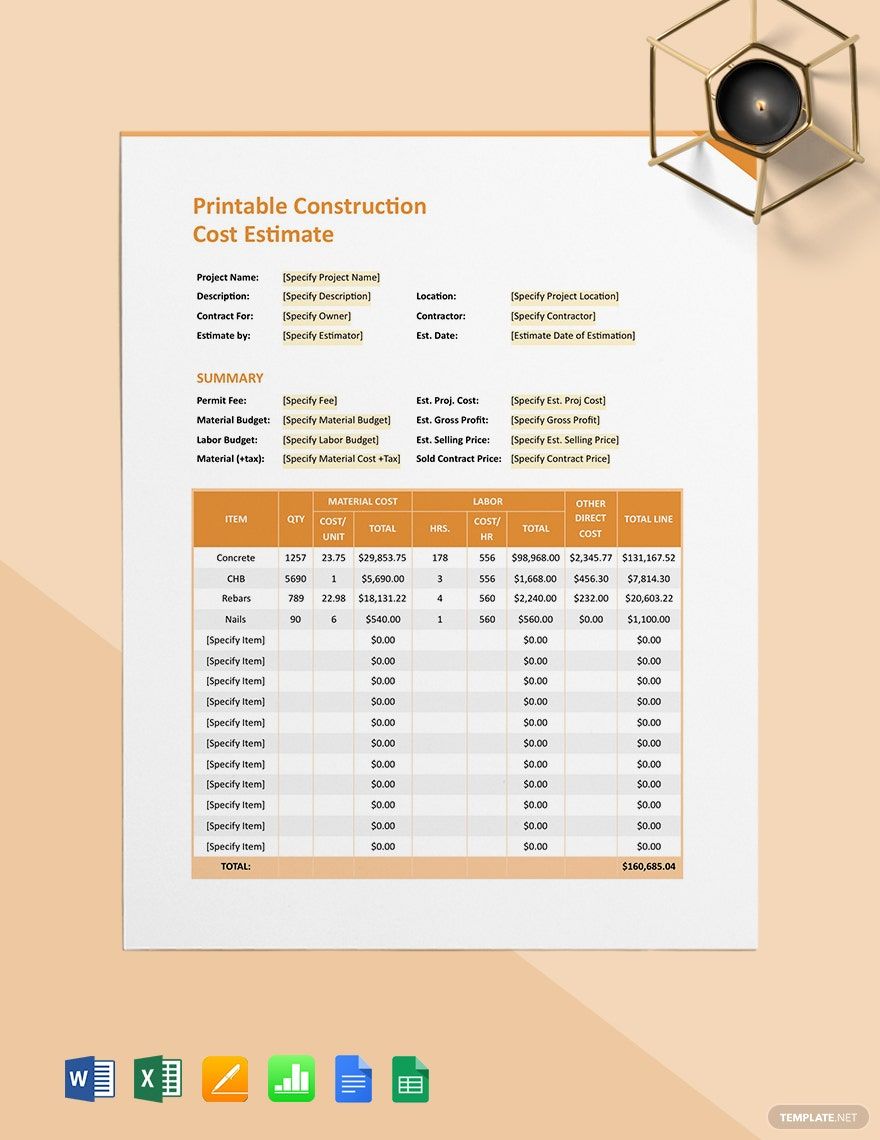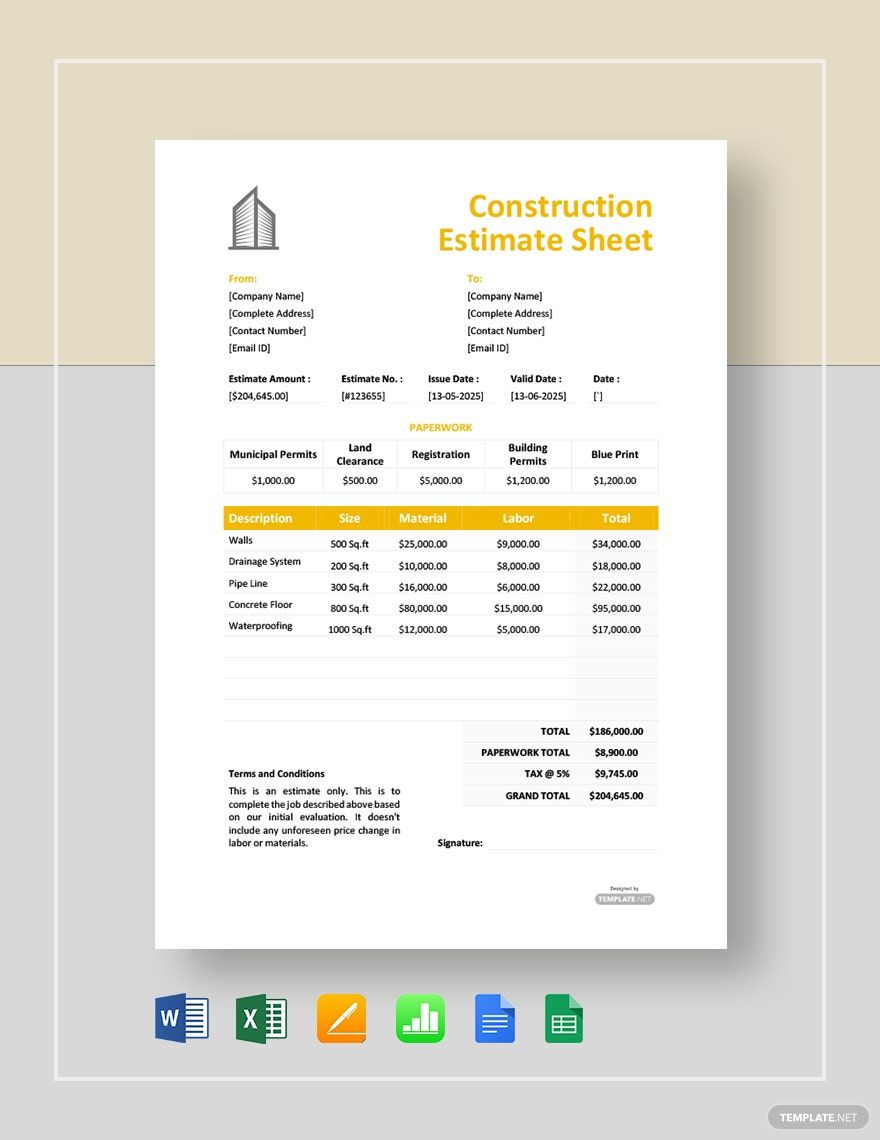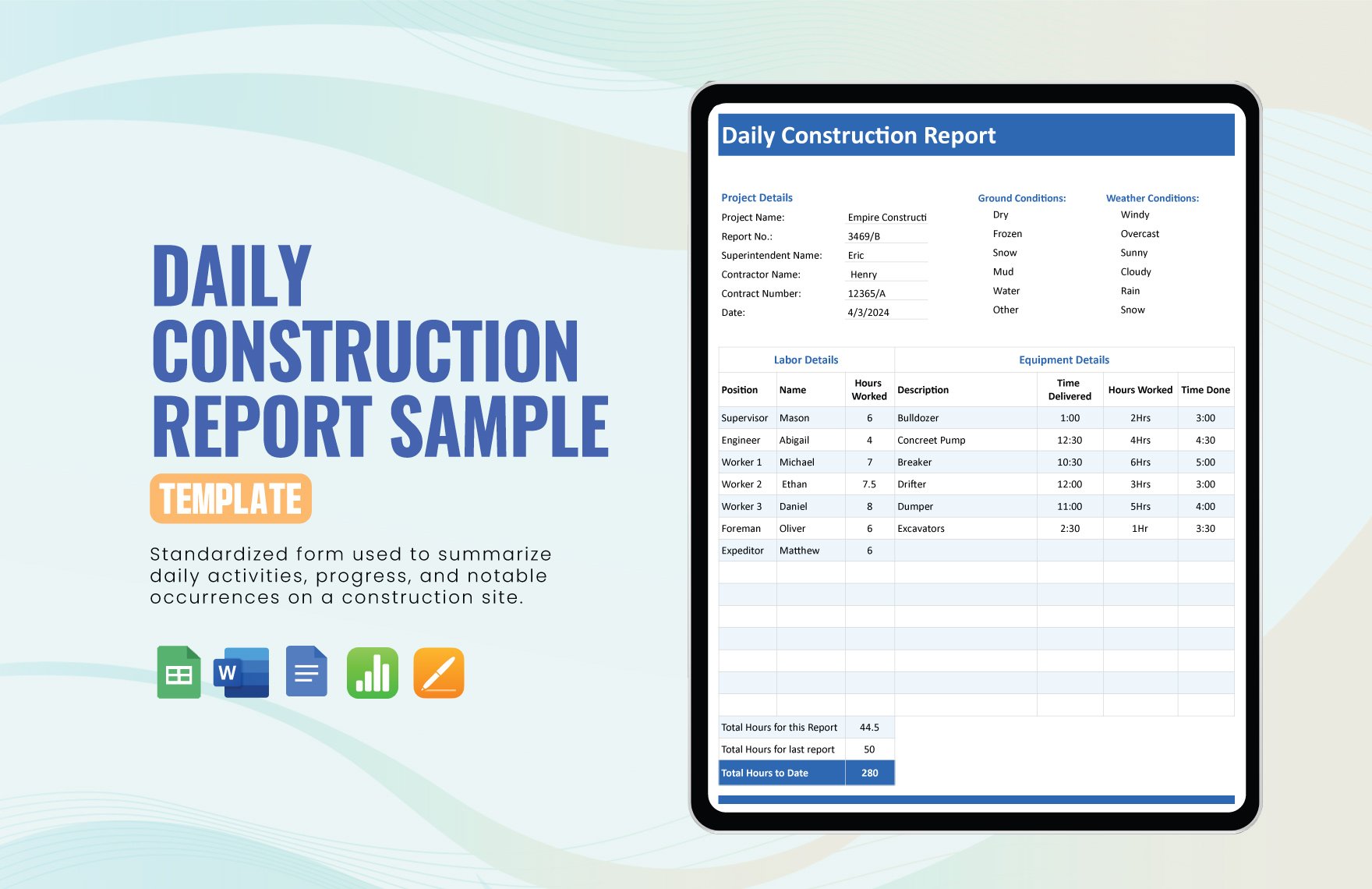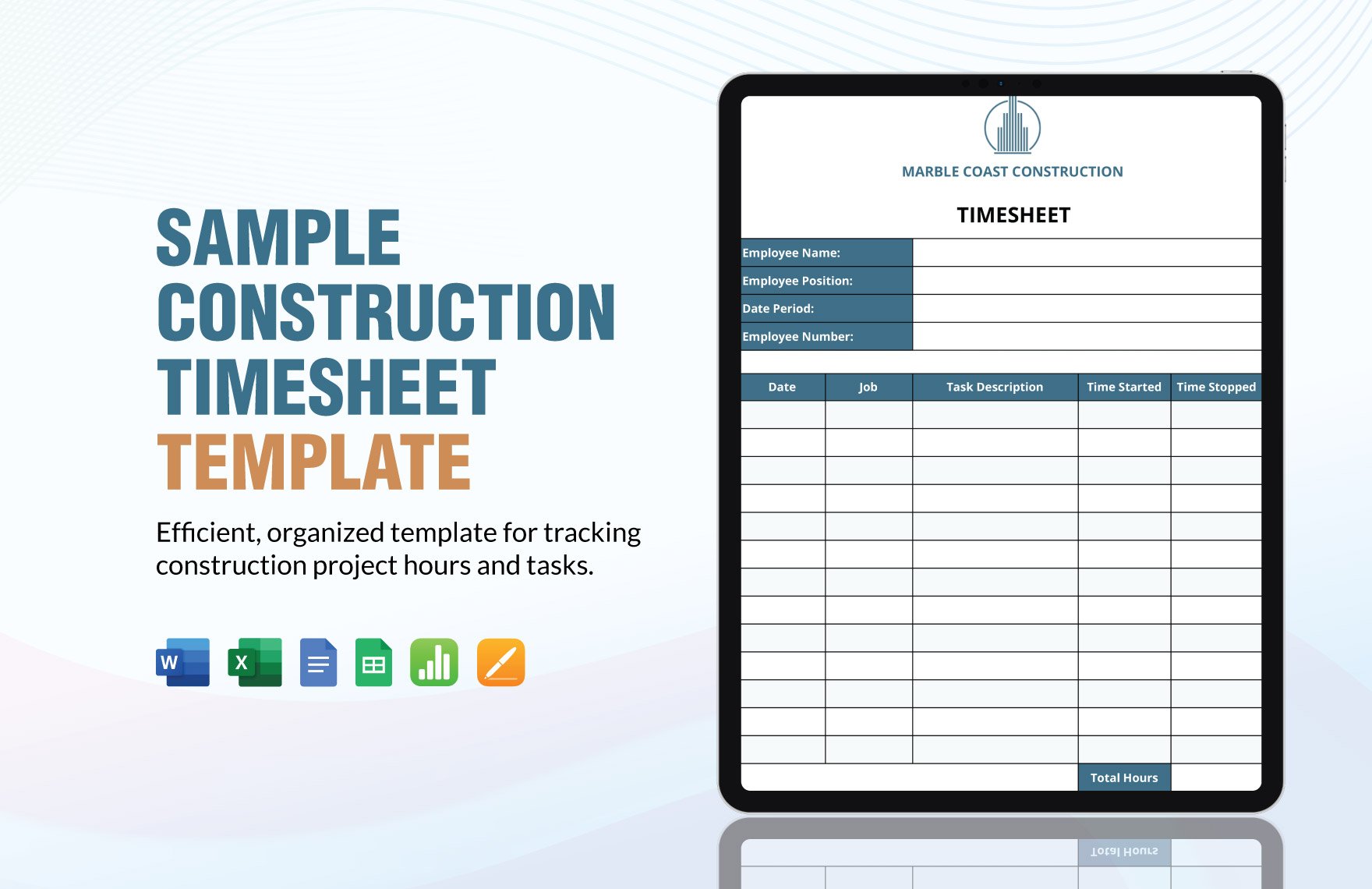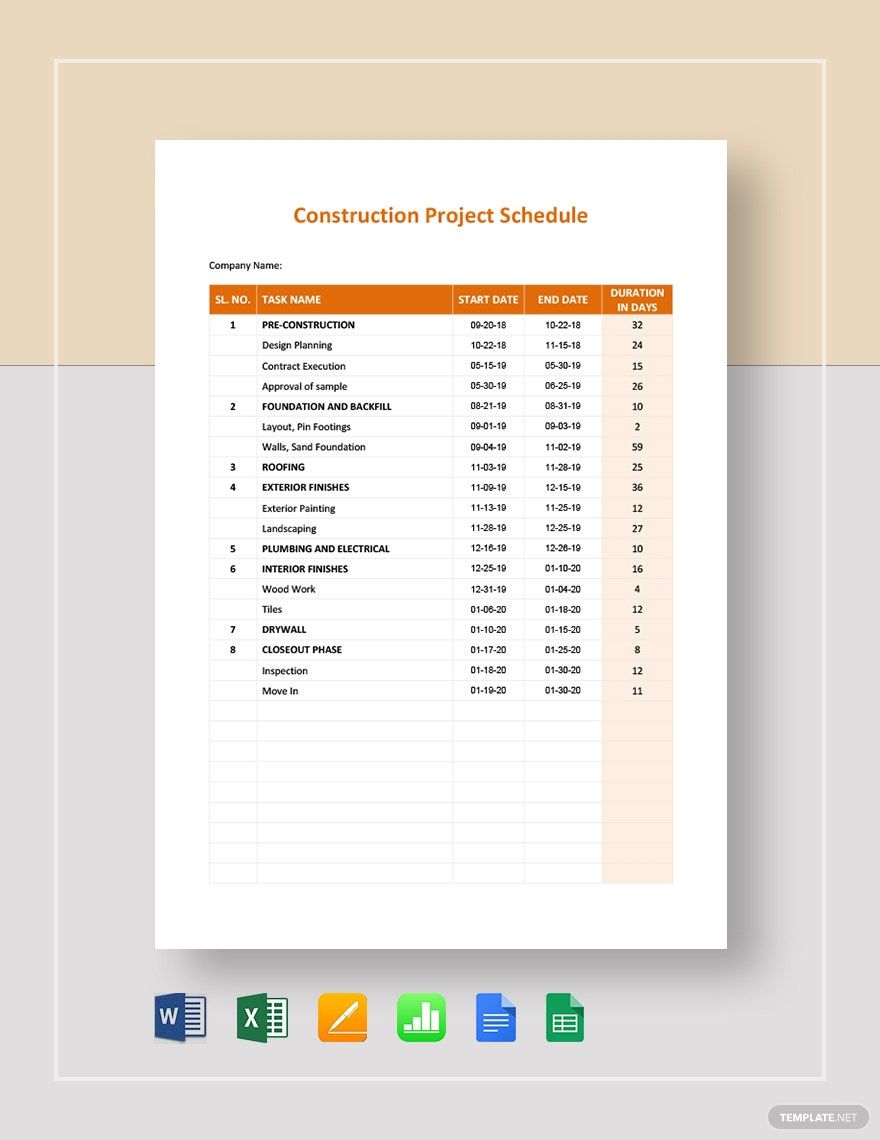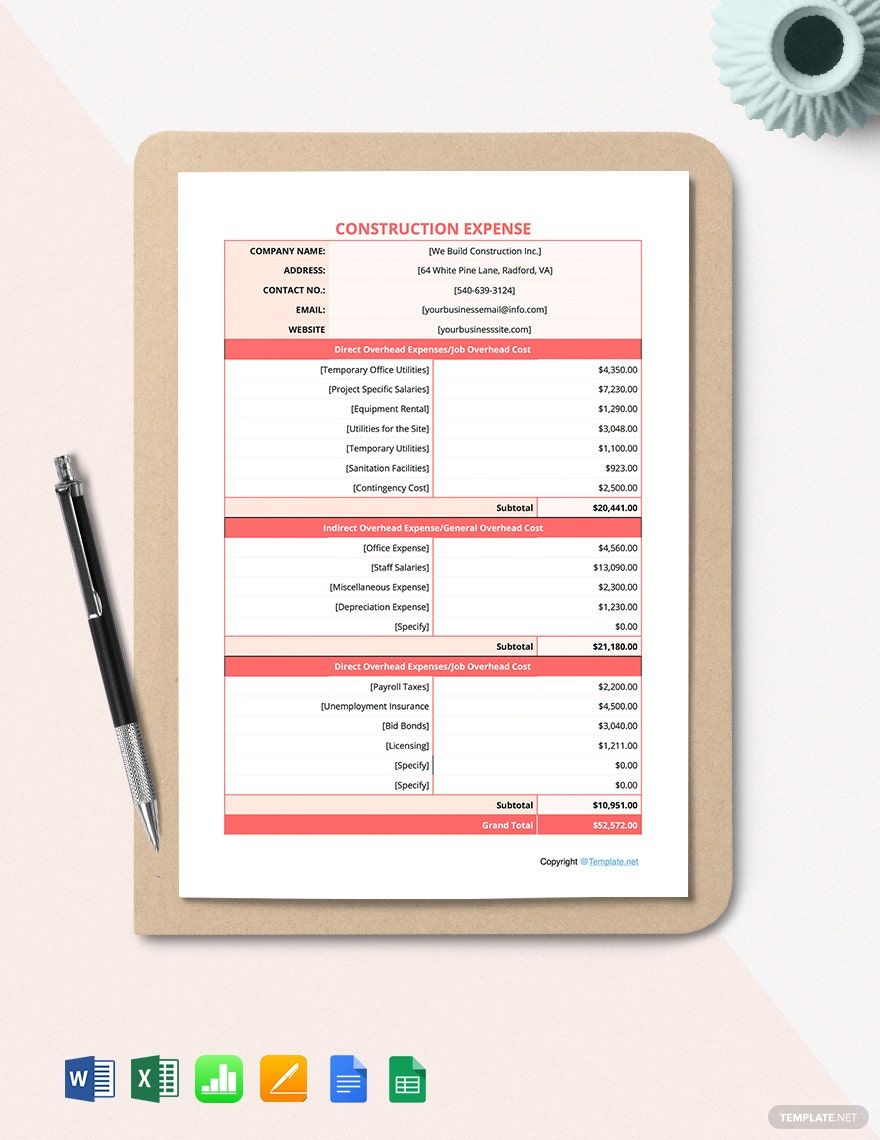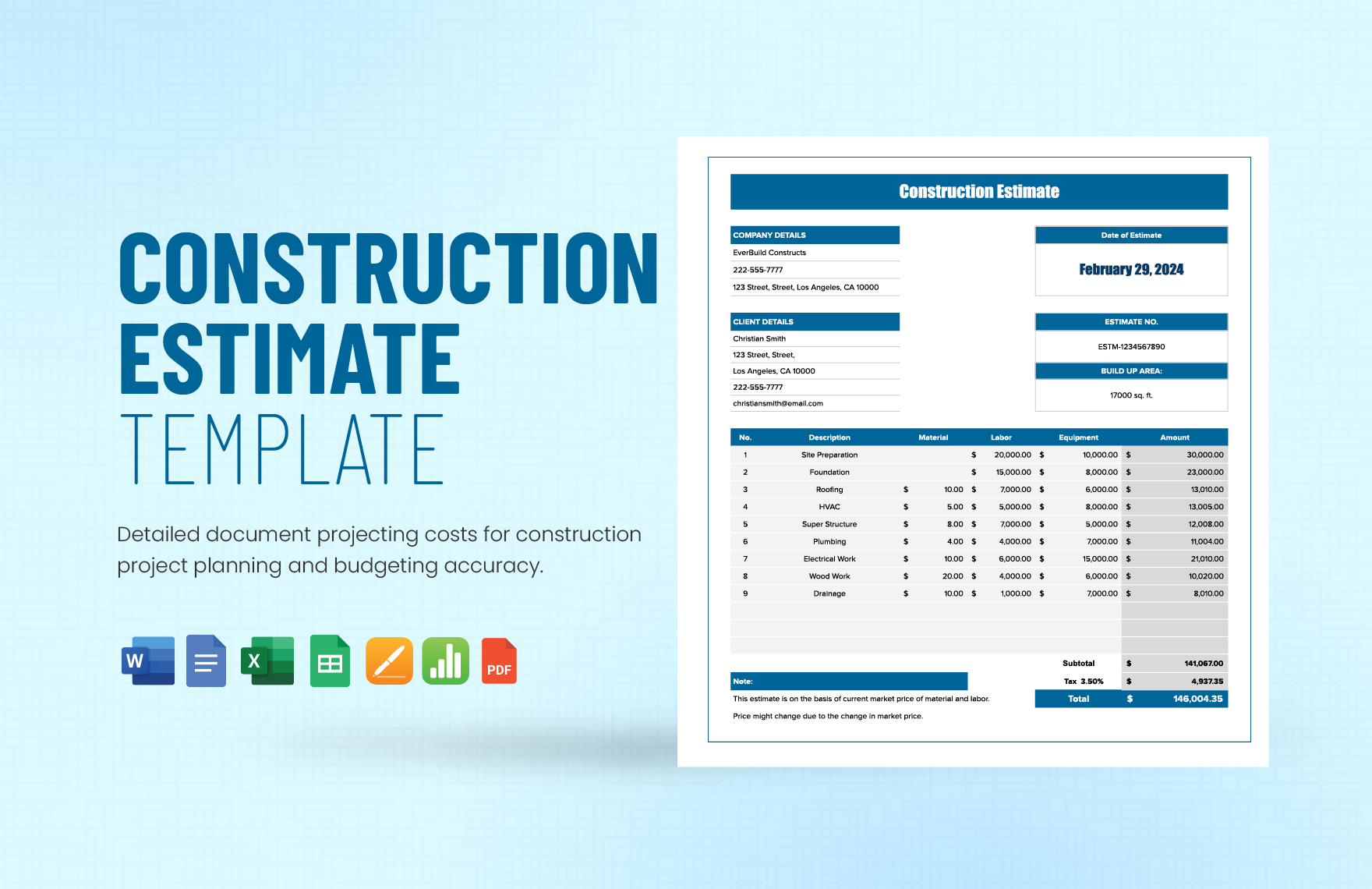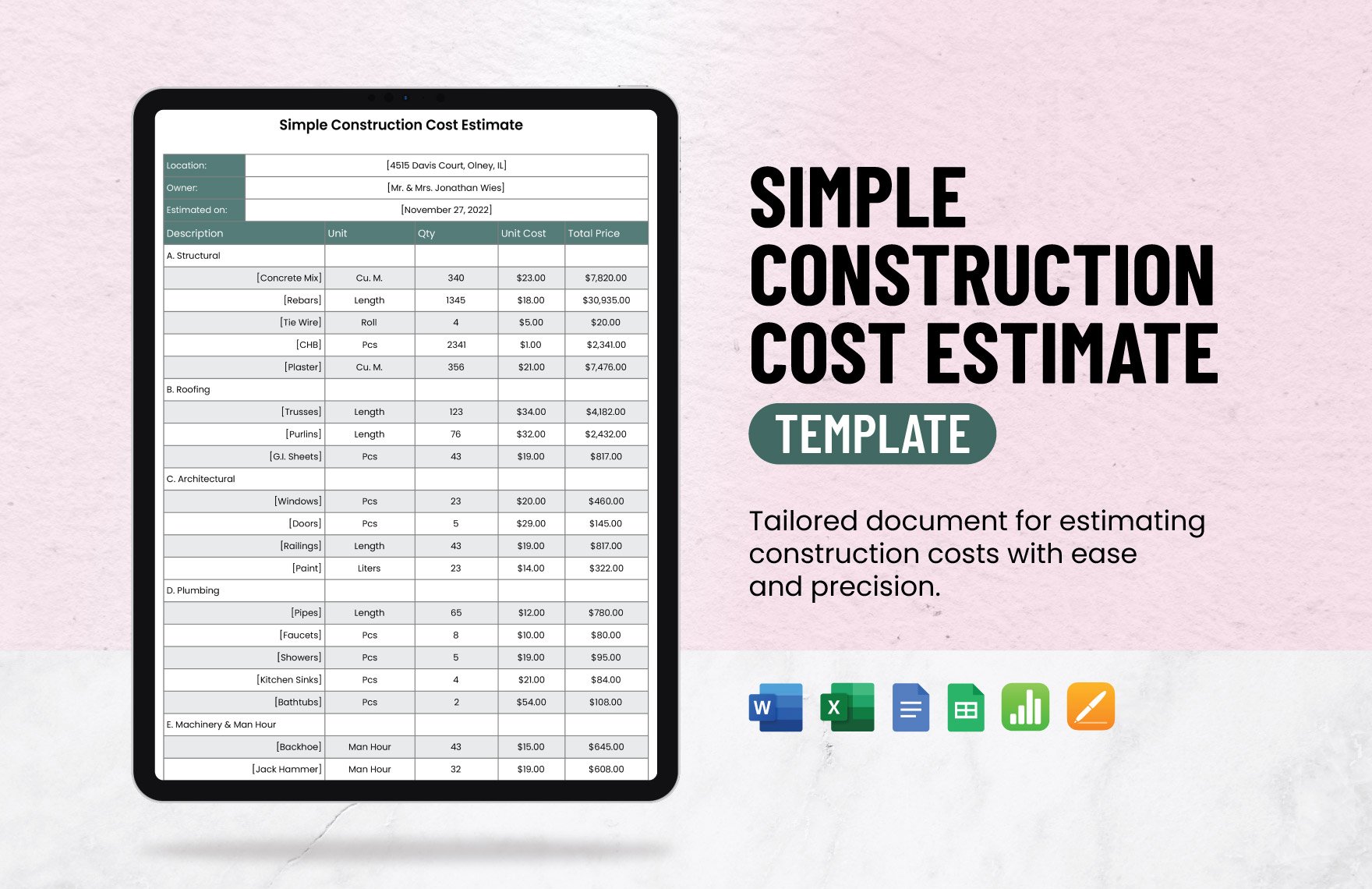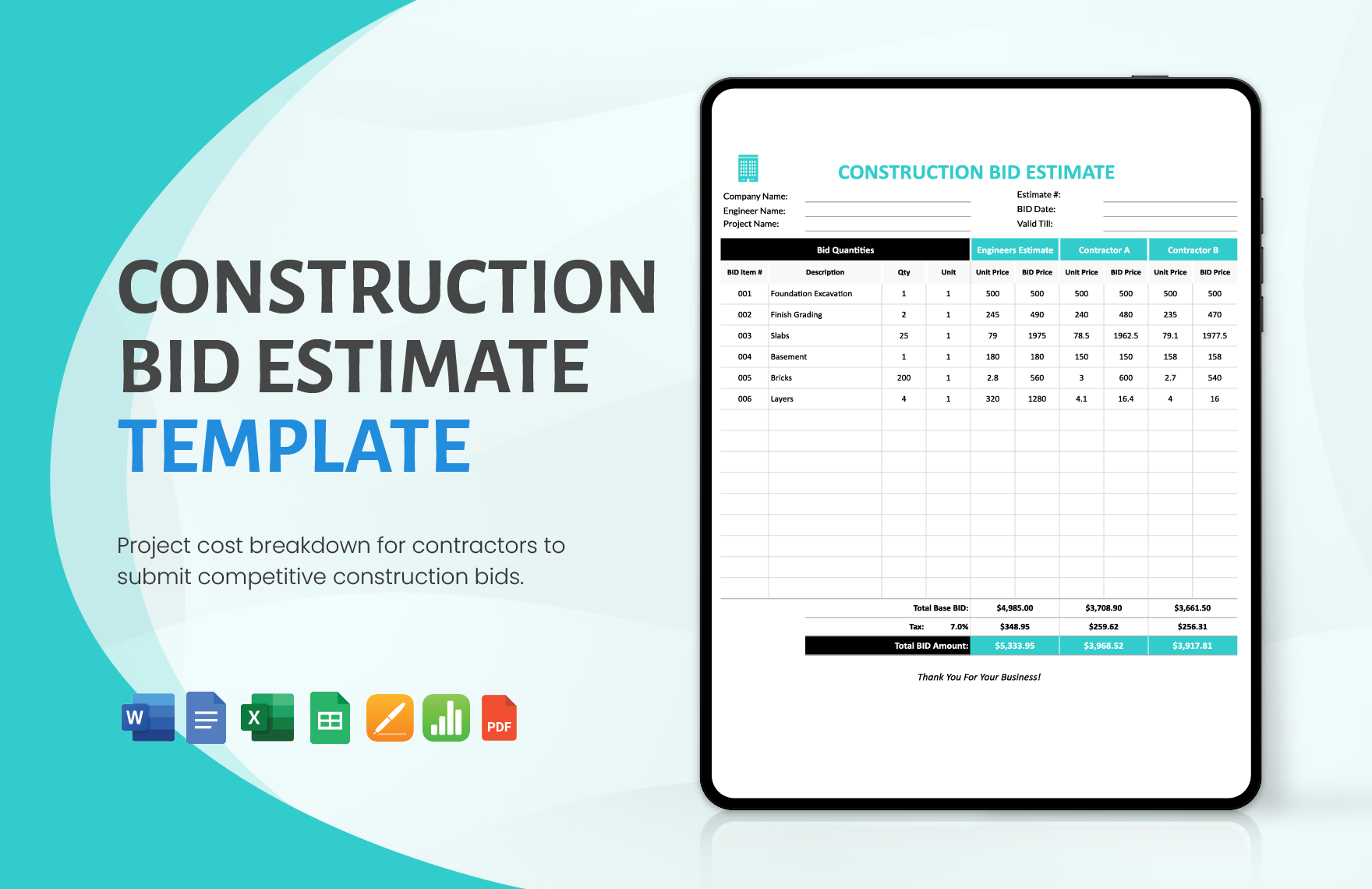A construction project, either small or large, is composed of many activities. Each construction phase has much work to do, including documentation. As a project manager, you must prepare all the necessary documents, which may include work schedule, cost tracking, material purchase, budget estimate, and many others. We understand that these tasks are somehow an additional load of work for you. That is why our site offers various 100% customizable and professionally written Construction Templates in Numbers. These templates are perfect for your needs and will surely help you out throughout your project. You don’t have to waste your time drafting your template since you can download them in an instant. Subscribe now!
How to Create a Construction Document in Numbers?
Construction documents are documents necessary to record all the expenditures, progress, and other important aspects of the project. According to David Ross Associates LLC, a real estate developer, documentation plays an important role in construction project management. This method helps the contractor in reaching their specific goals and objectives as it allows them to track their progress. It also provides the contractor with a “memory” of the project that can be used for future renovation, reconstruction, and analysis. We prepared a few tips for you to apply when making construction documents, like Construction Receipts and Construction Estimation papers which are as follows:
1. Discuss the Goals and Objectives of the Project
Before you create your construction document, you should discuss your documentation goals and objectives first with your project management team. Set a meeting and thoroughly review your Administrative matters, goals, and objectives. In this meeting, you will gain important information that will be used when making your construction document.
2. Create Your Construction Document
After your discussion, you can now start creating your construction document. For instance, if your goal in the work schedule has a specific timeline, your Construction Schedule should also detail the timeline for the awareness of the construction team. The same logic goes to other documents. When creating your construction document, don’t forget to include essential information such as the contractor’s name, Project Manager’s name, Project Number, Location, and Project Name and Construction Project Budget.
3. Design Your Construction Document
It would be best to add a little creativity to your document. Colors can help your stakeholders to quickly understand your construction document, so make sure to colorize your documents’ tables, headers, and subheaders. Check out the design in our sample graphic templates for your guidance.
4. Review Your Construction Document
Before you present your construction documents, make sure to review them first. Proofread the content of your papers to determine layout misalignments, grammatical errors, and poorly constructed sentences. Remember that the content of your documents plays an essential role throughout your project. One mistake could lead to misunderstandings and may jeopardize a specific part of your project.
5. Present Your Construction Document
Once you’re done with your documents, present them to your project management team. Let them know that each document can help in reaching the goals that are discussed in the previous meeting, and these documents should be used at all times. Be open-minded and ask for feedback from your team. See if they can share their ideas to improve the quality and reliability of your construction documents.


